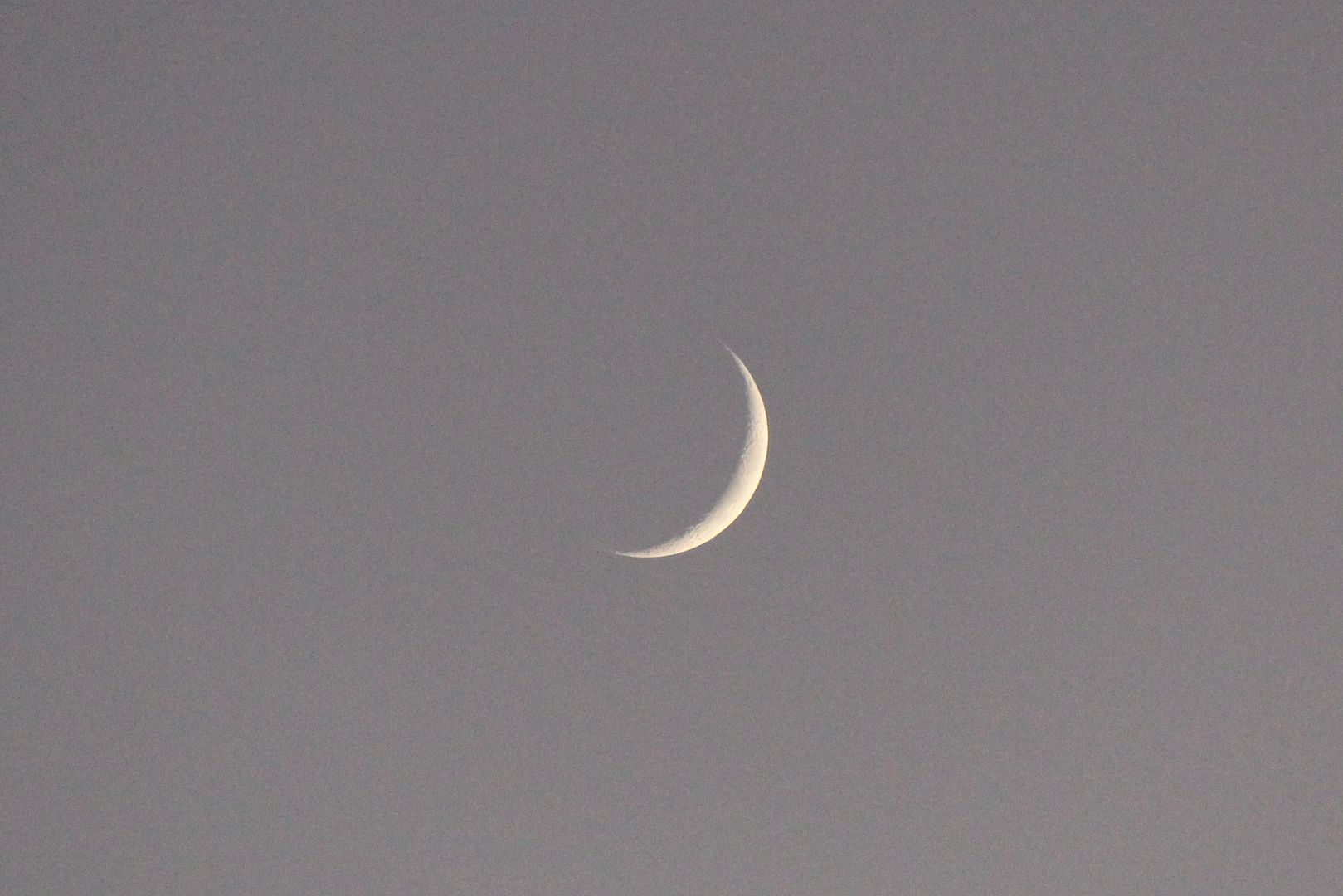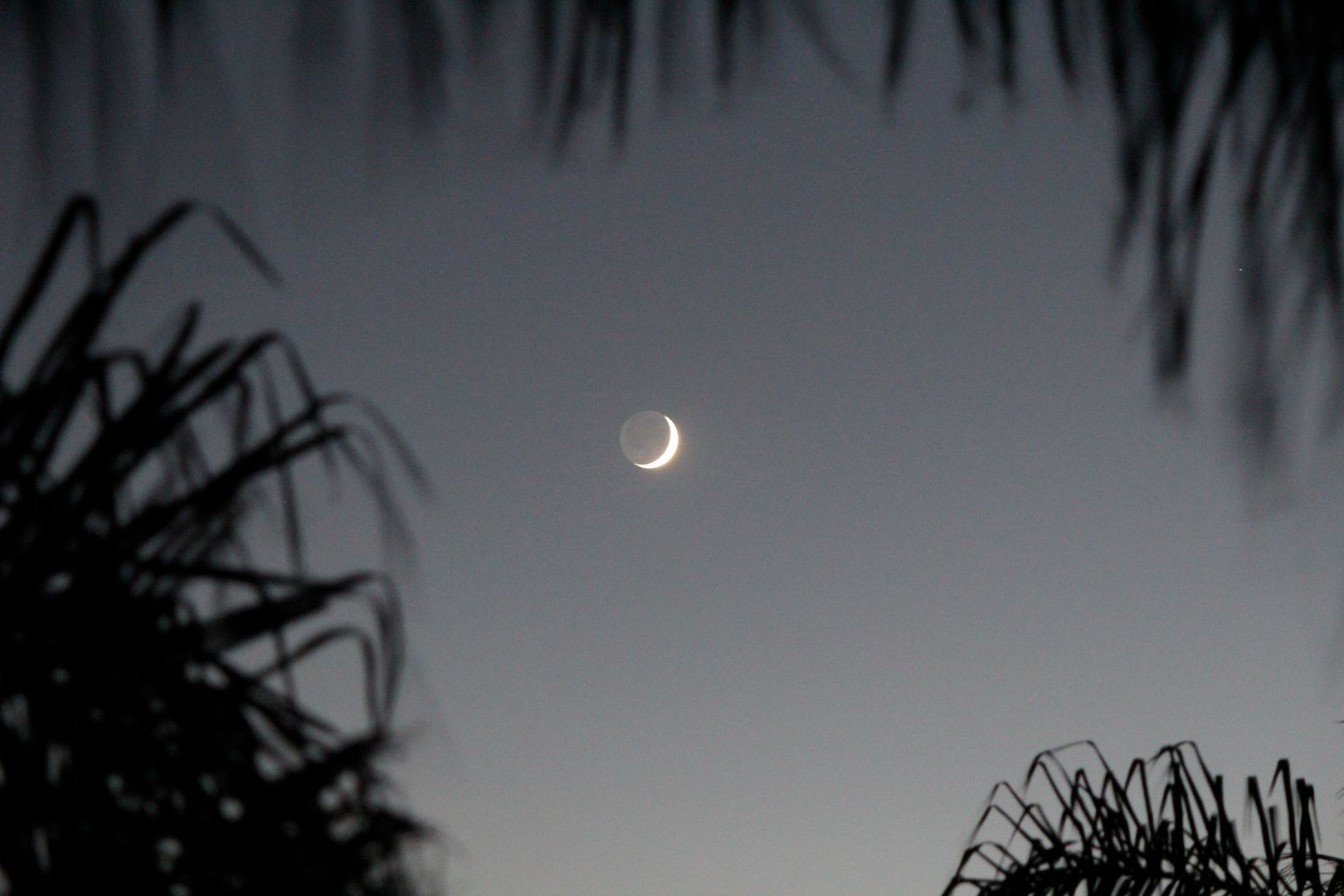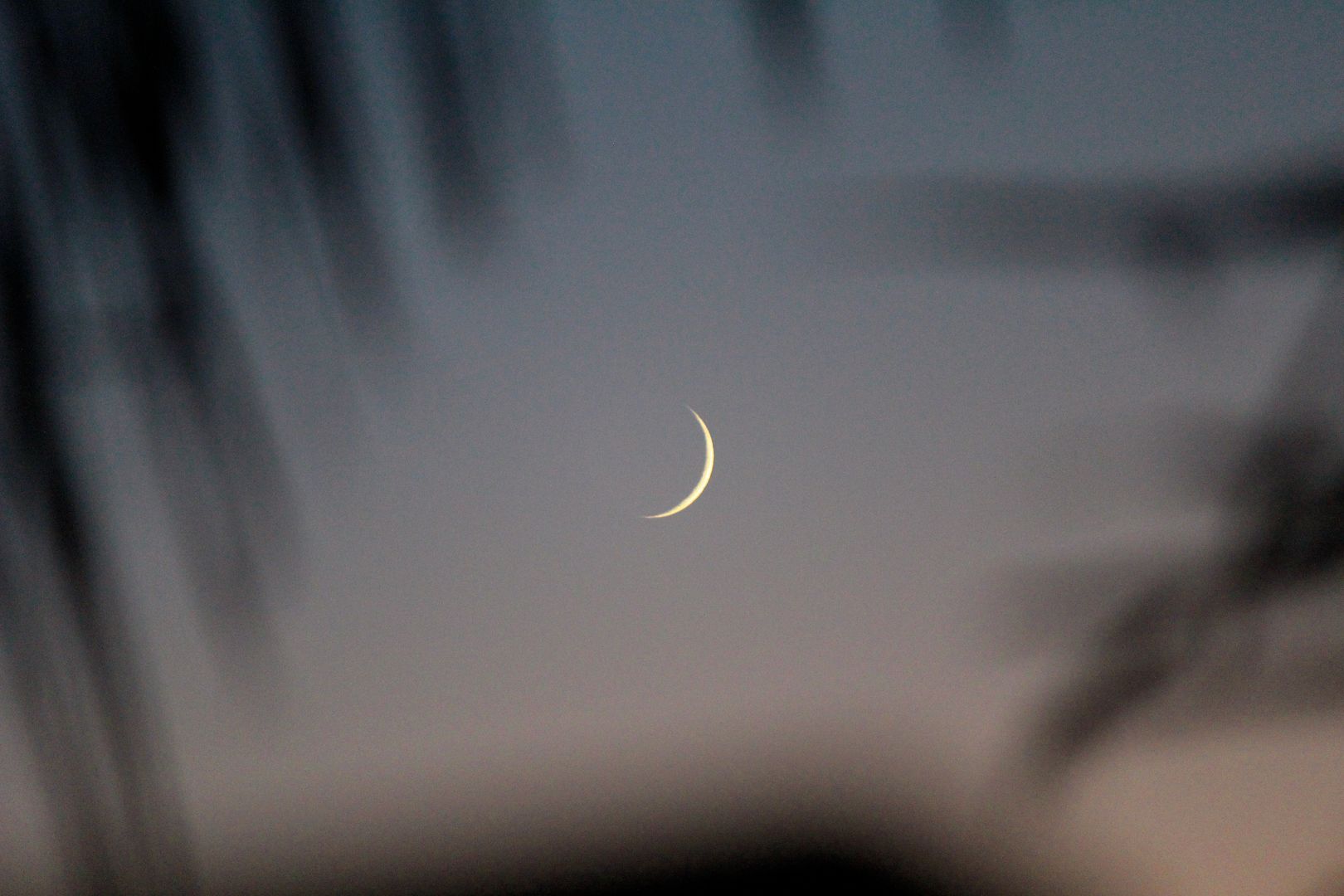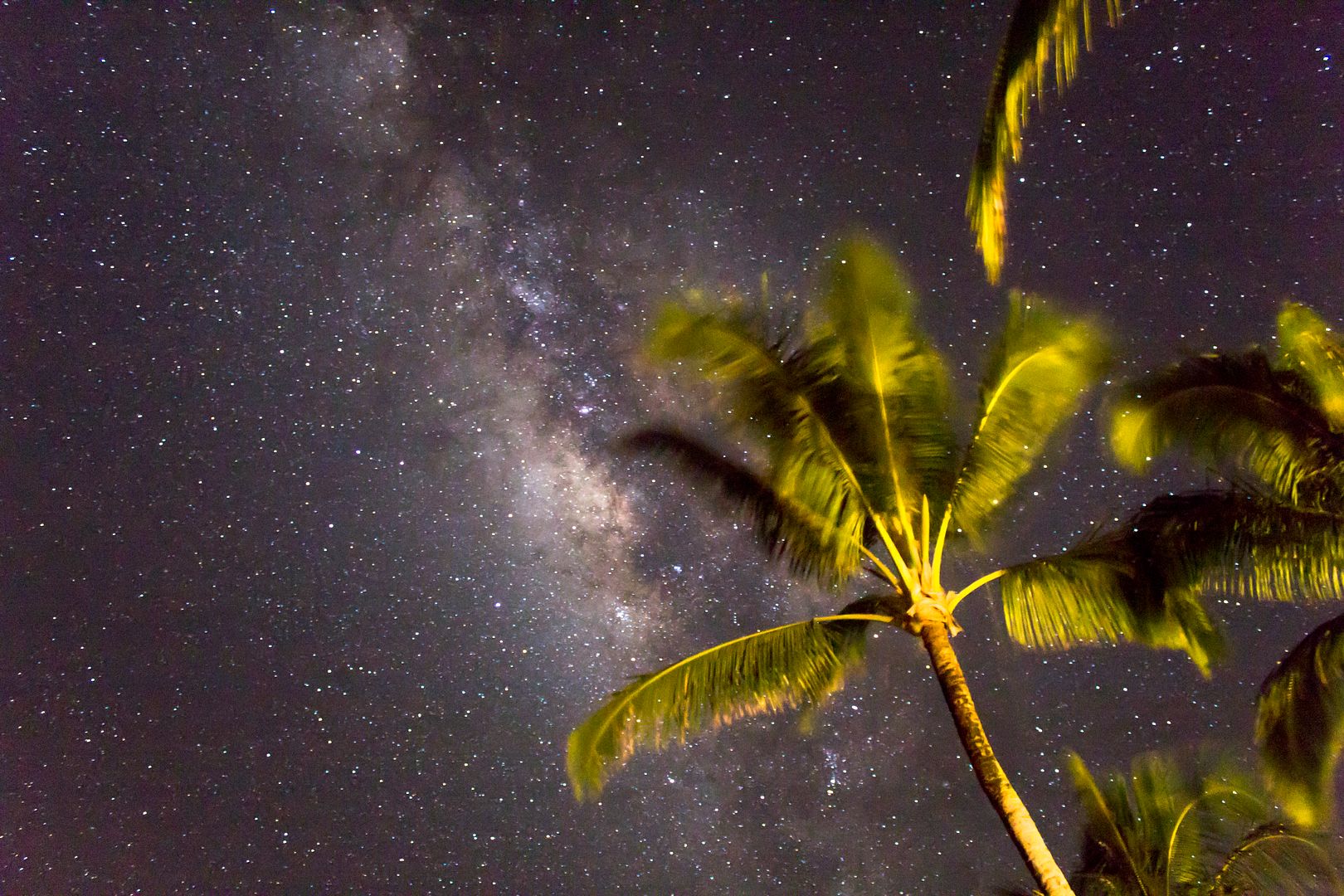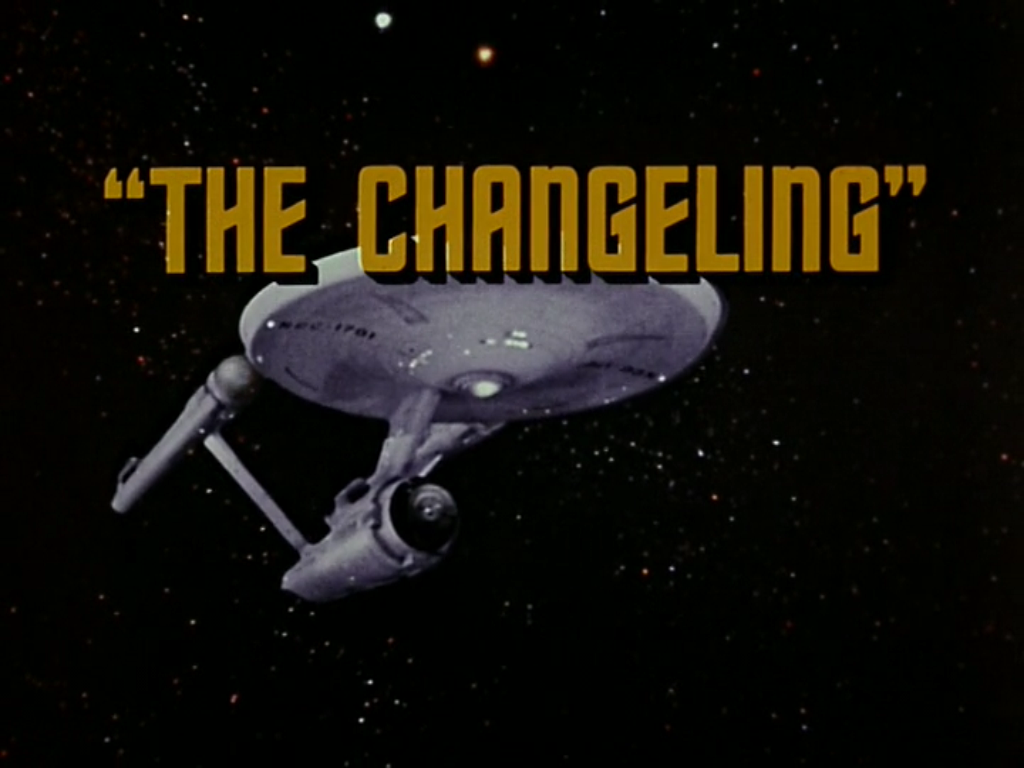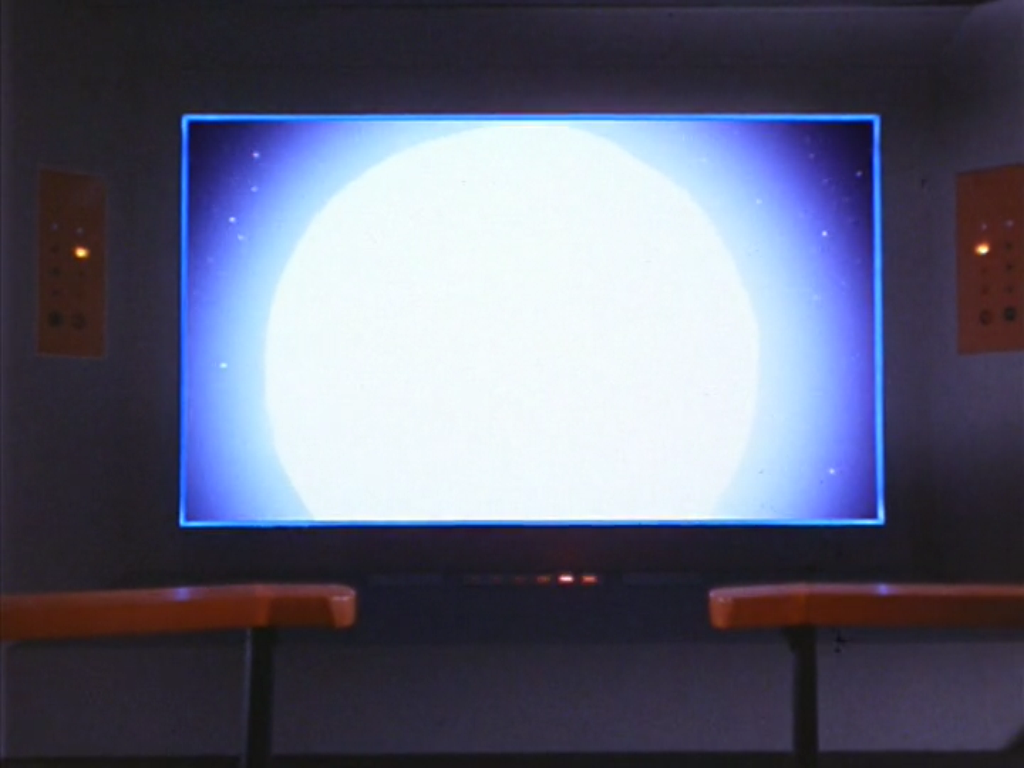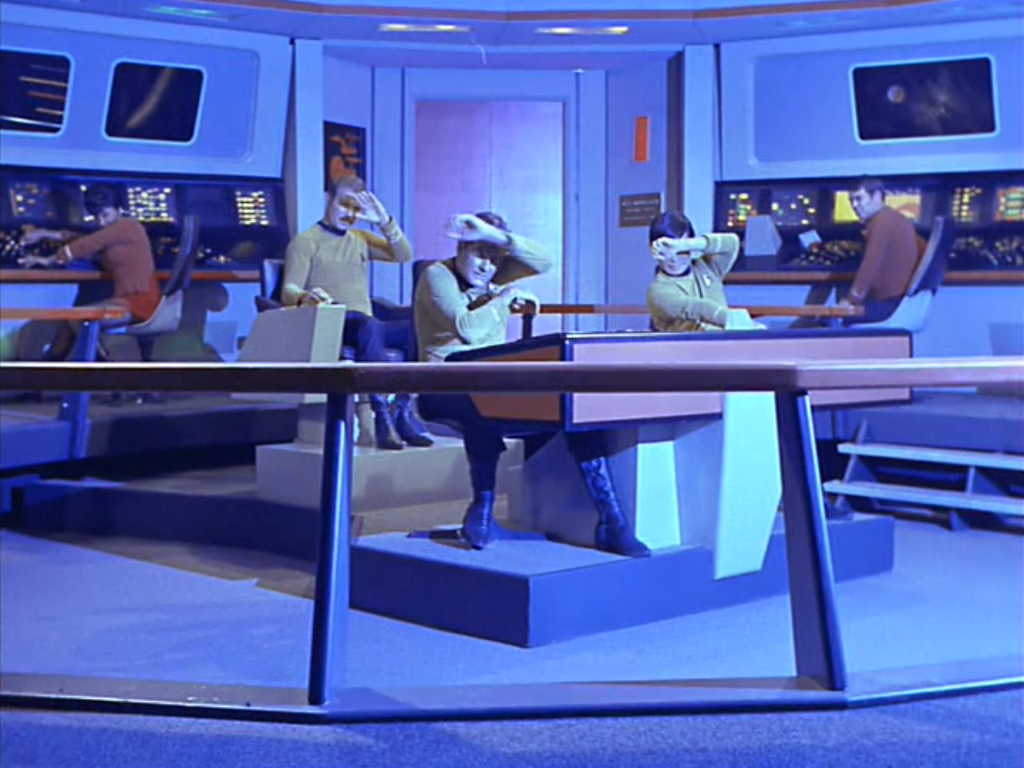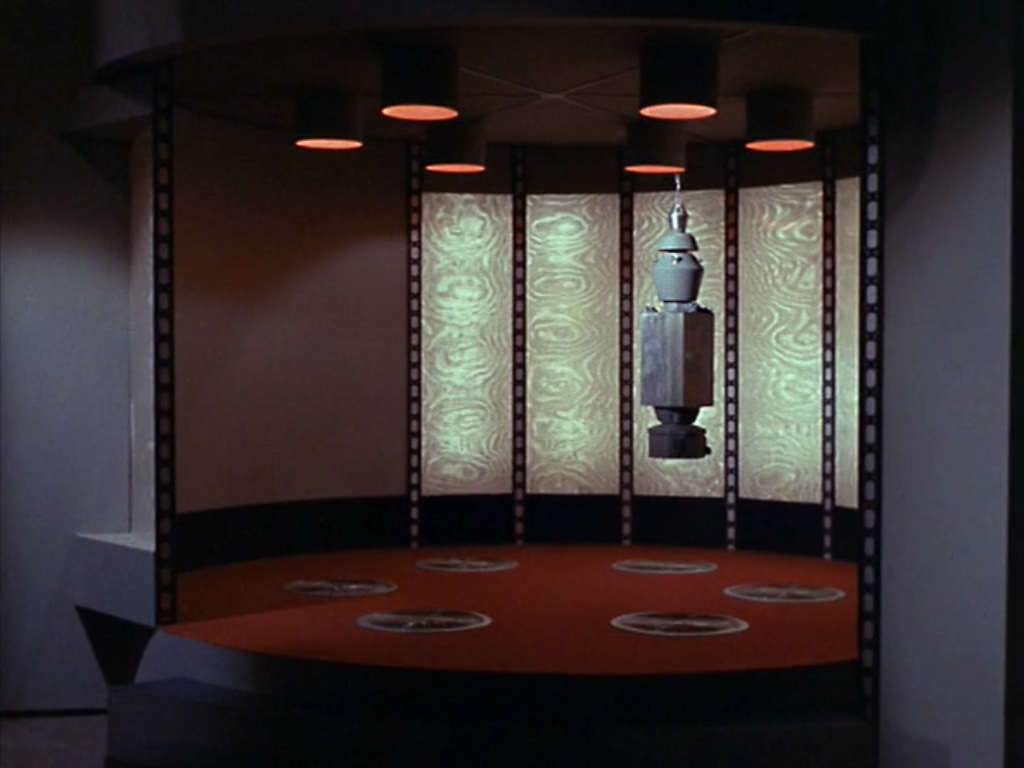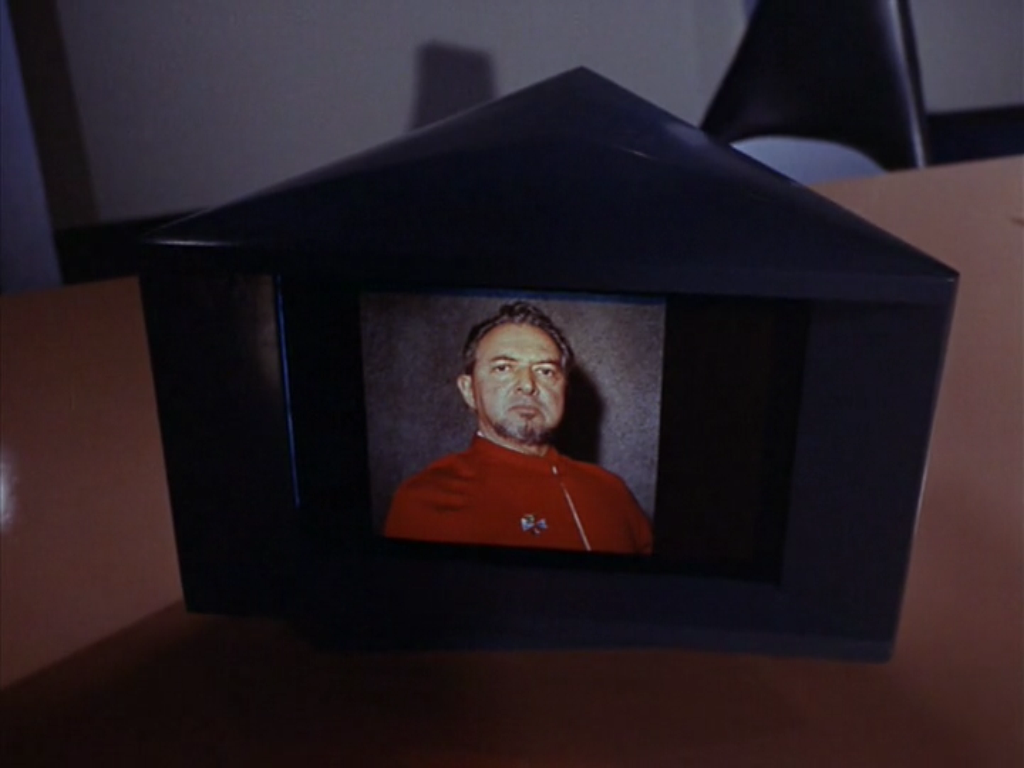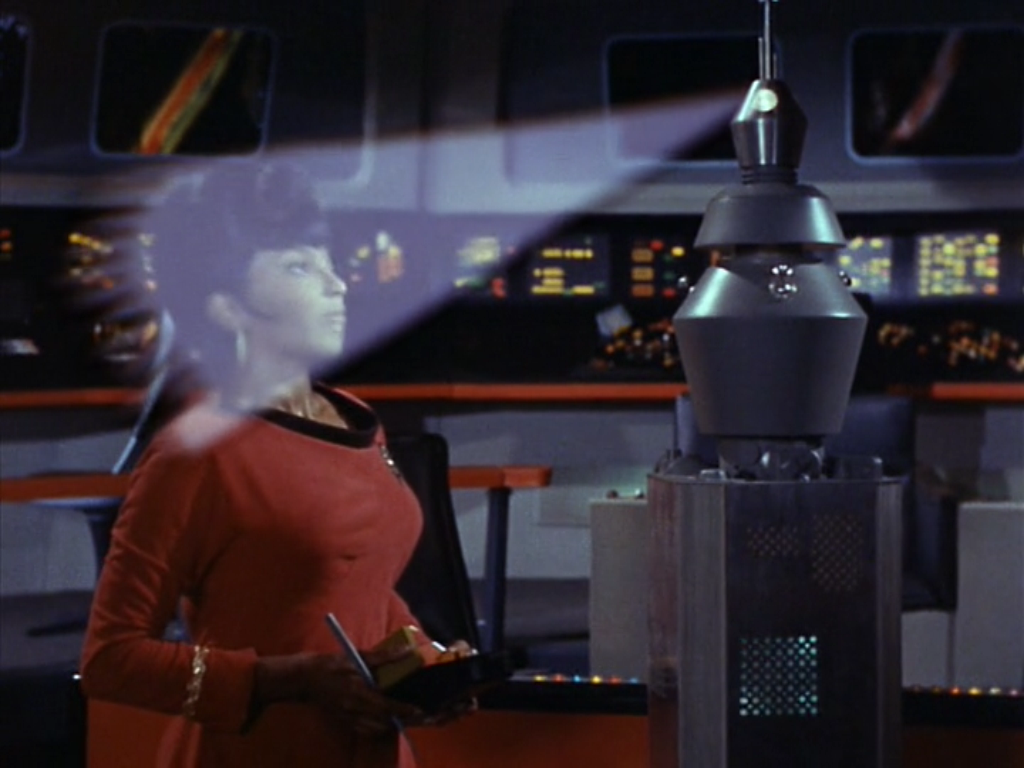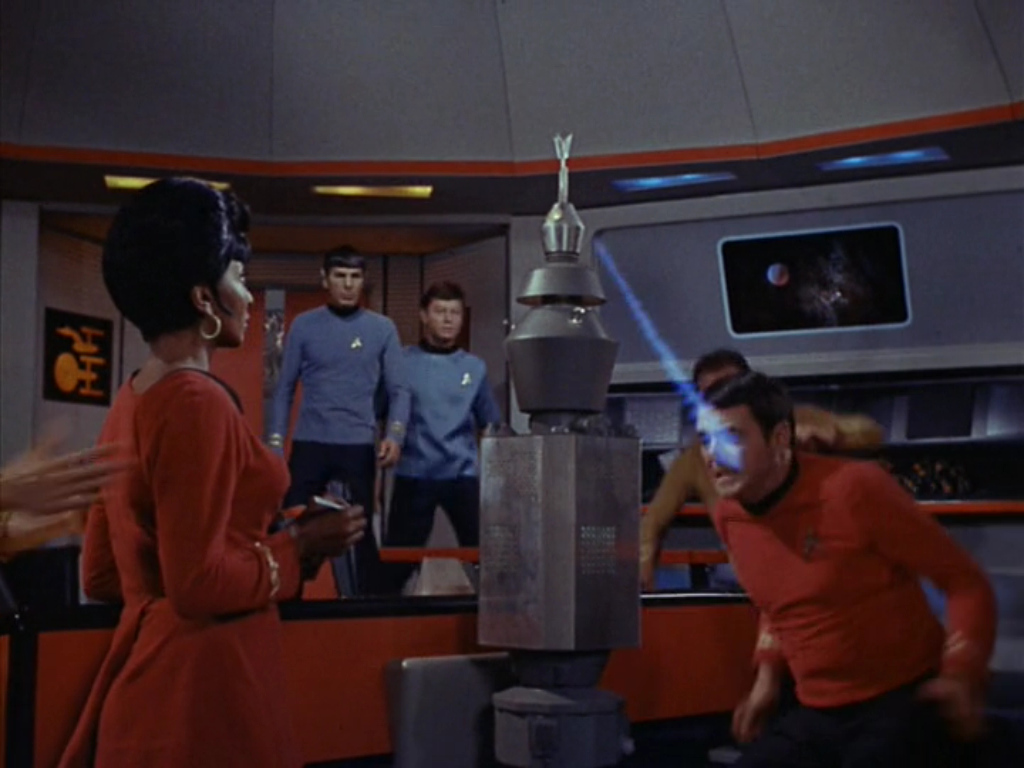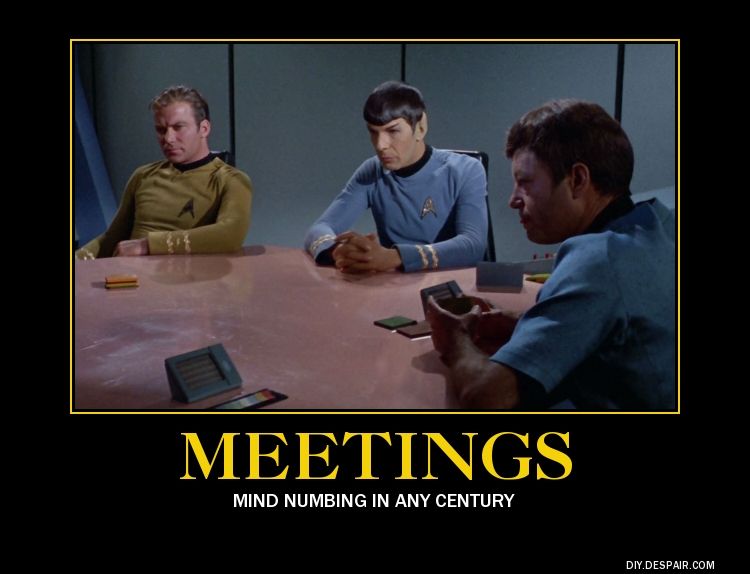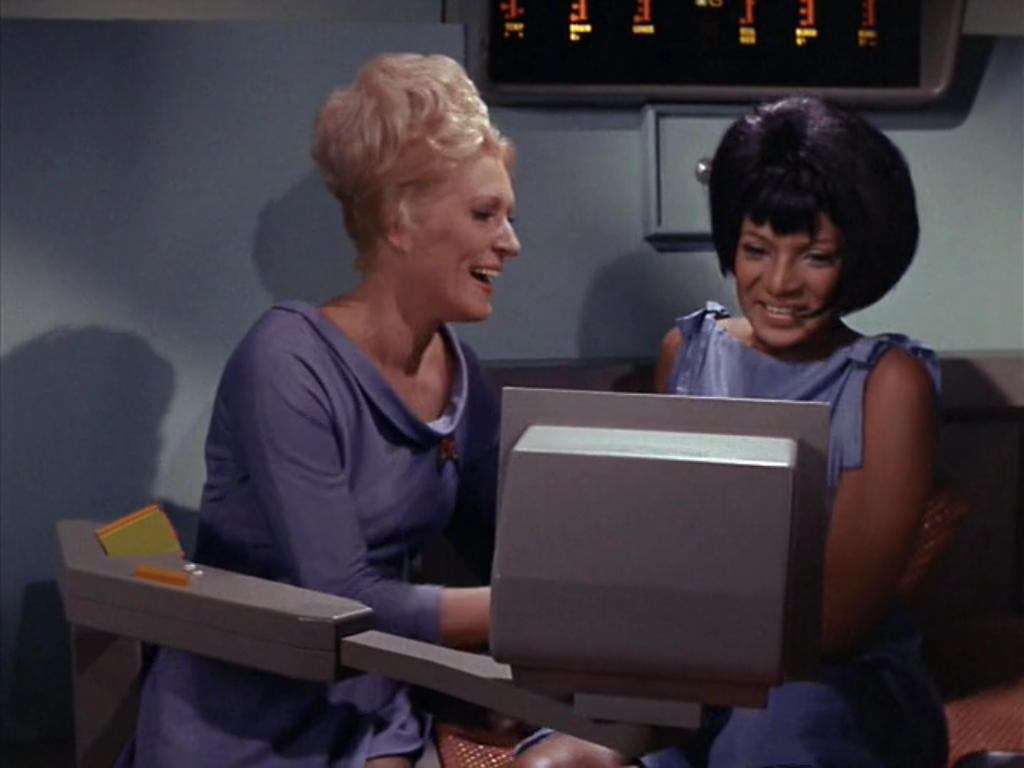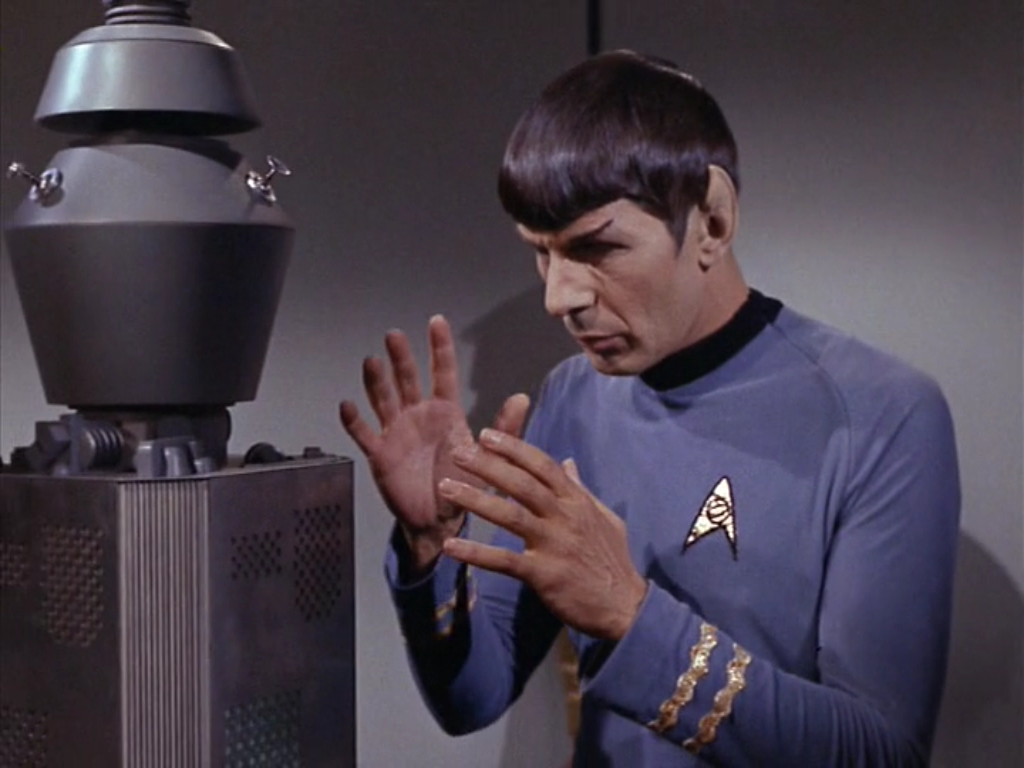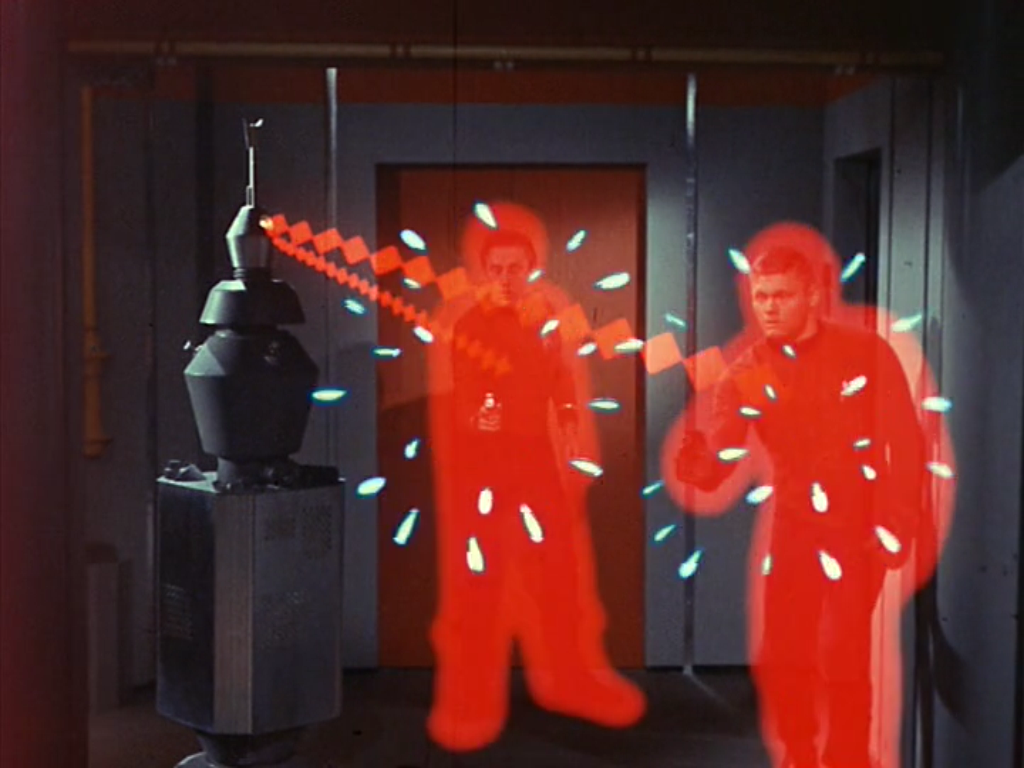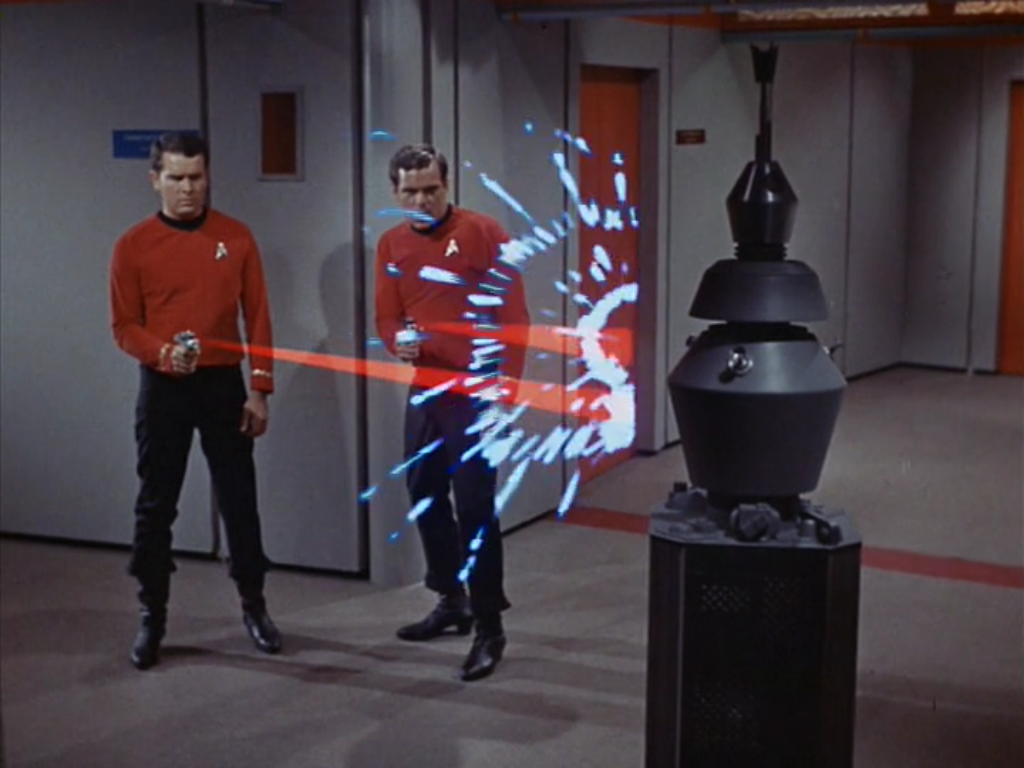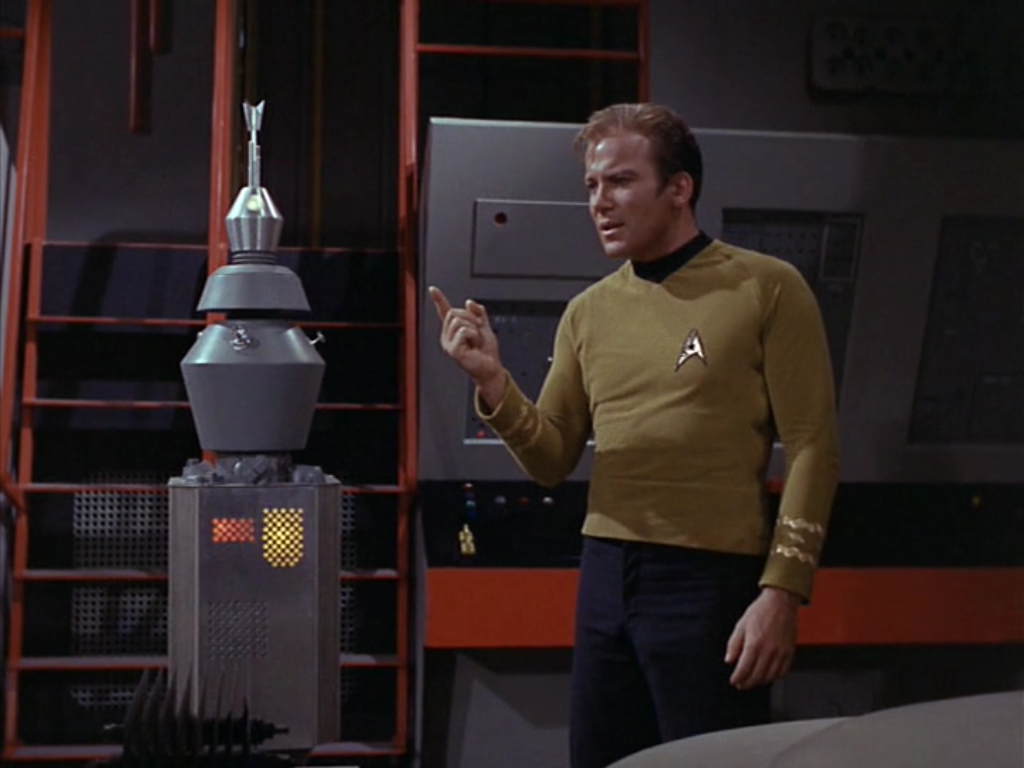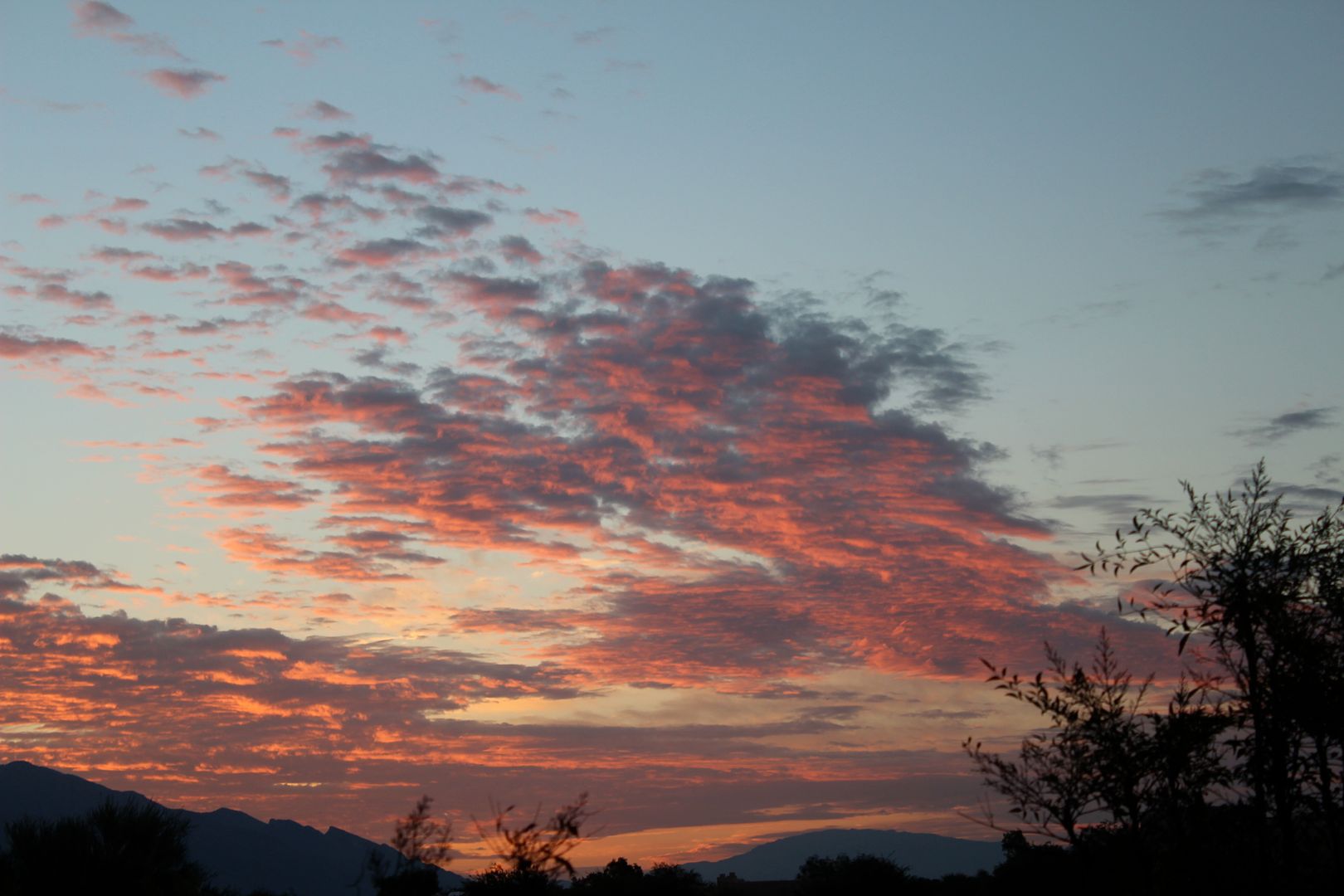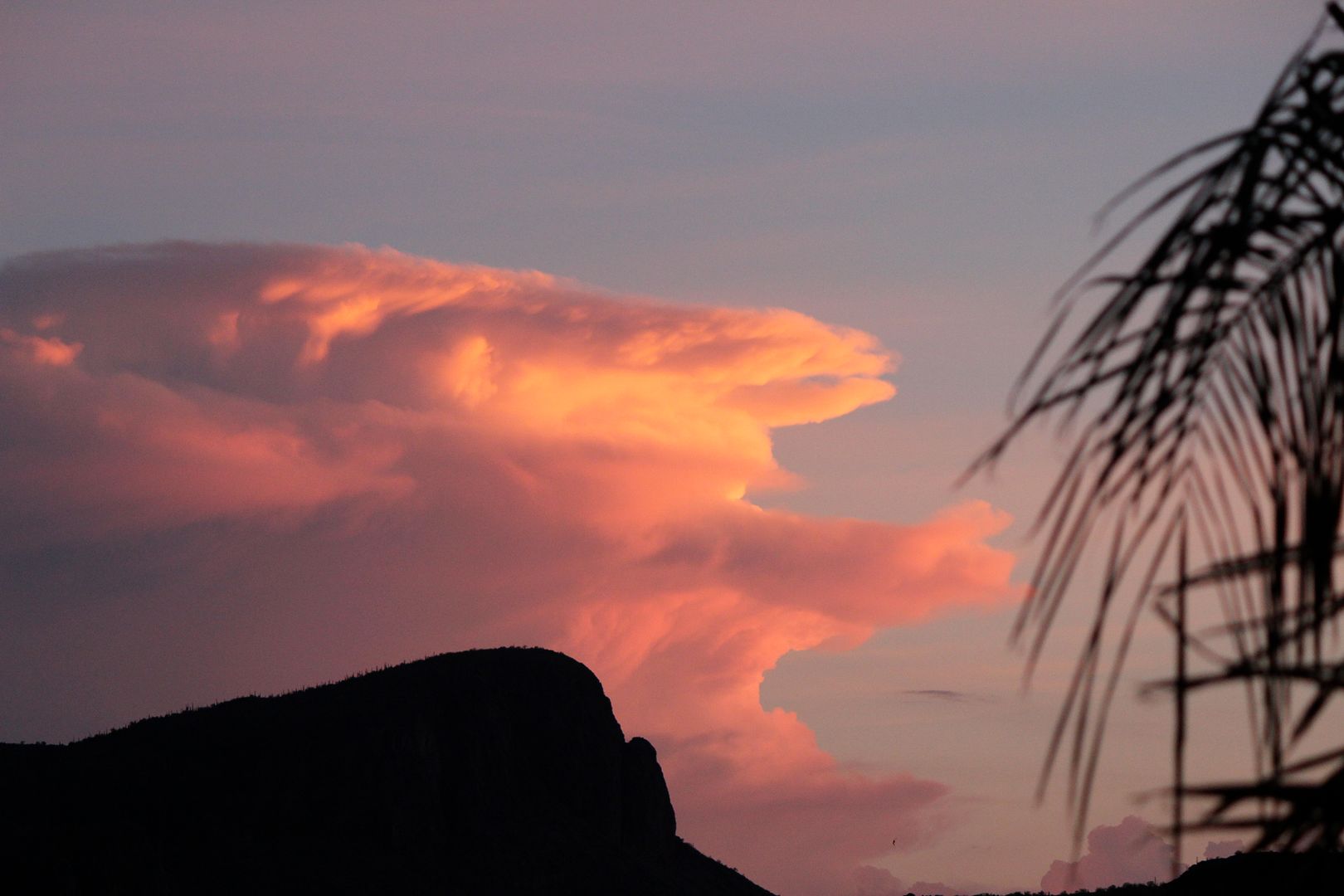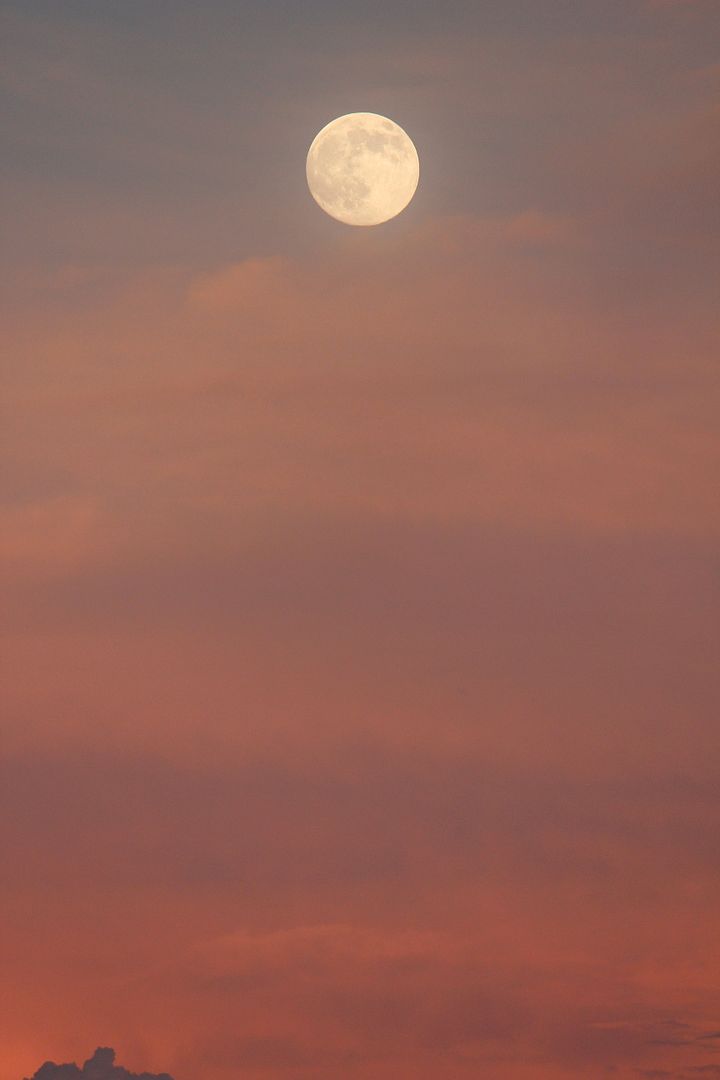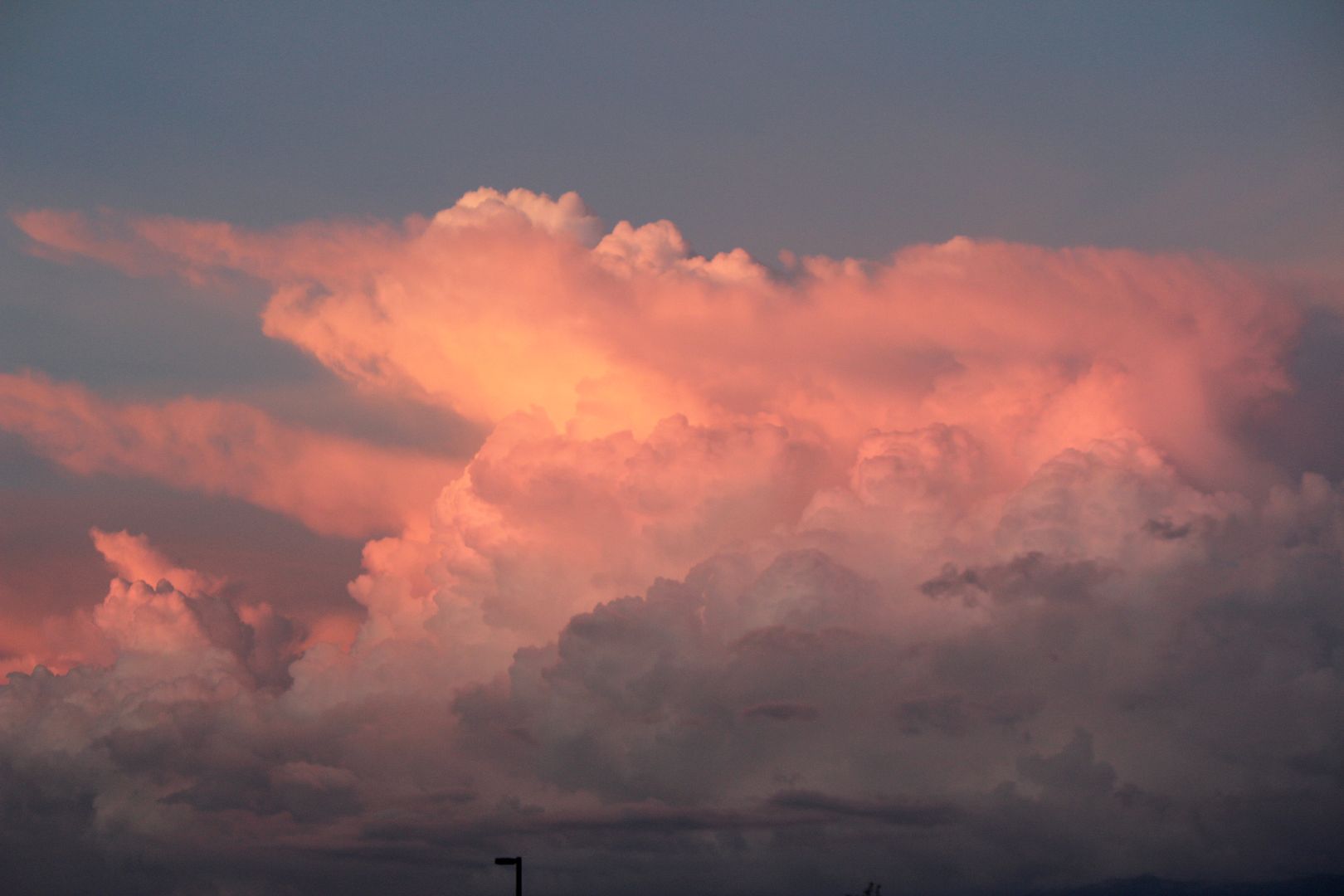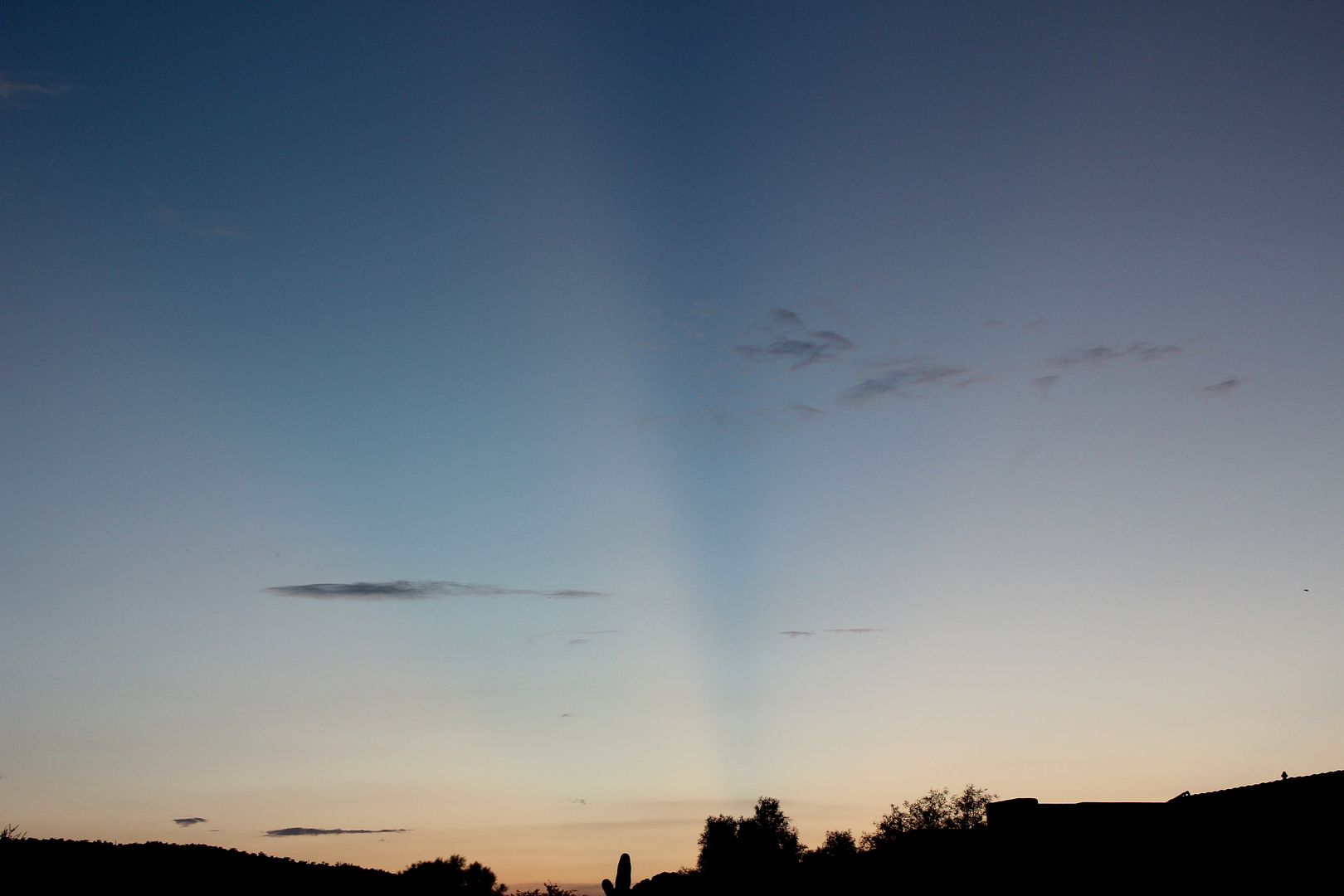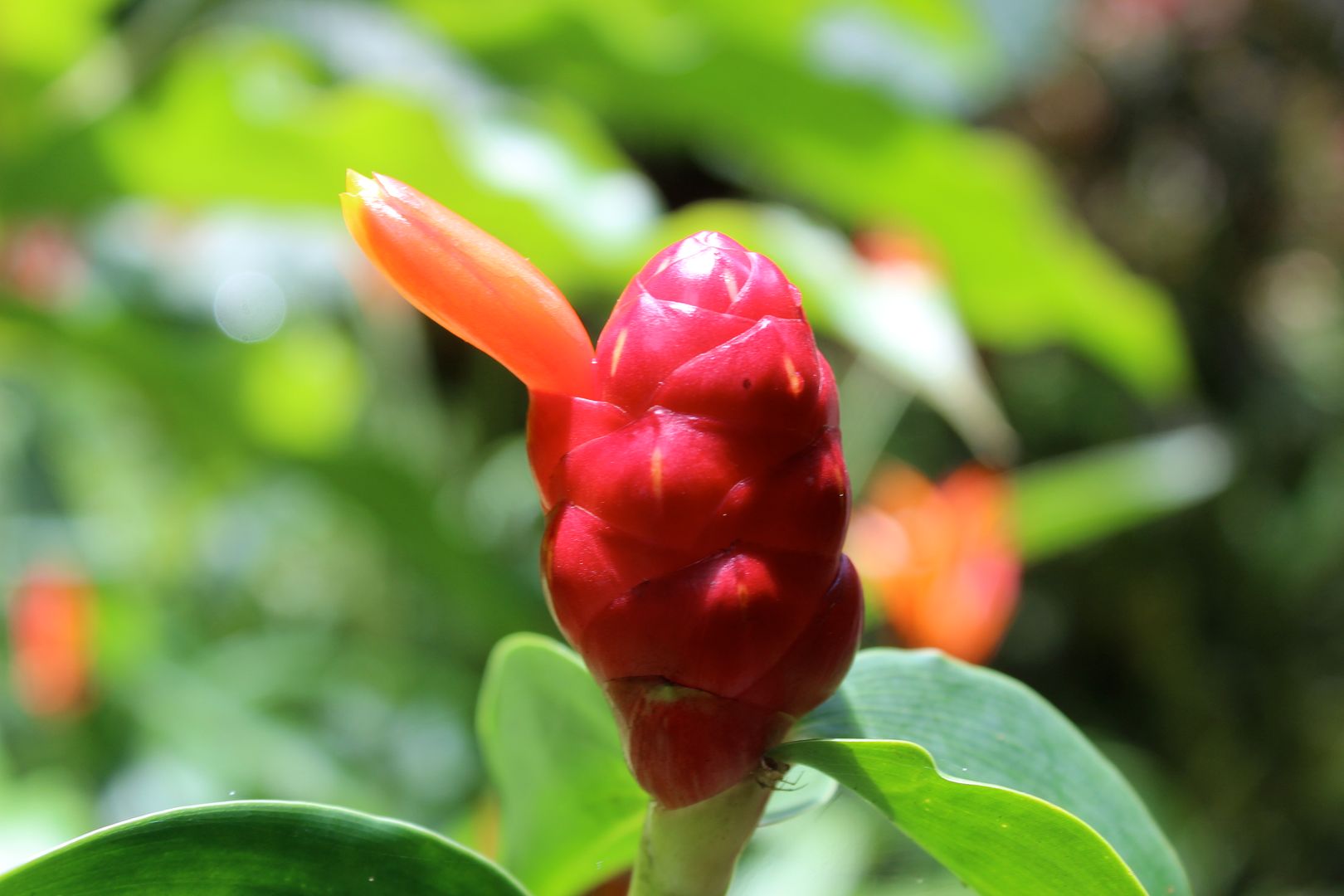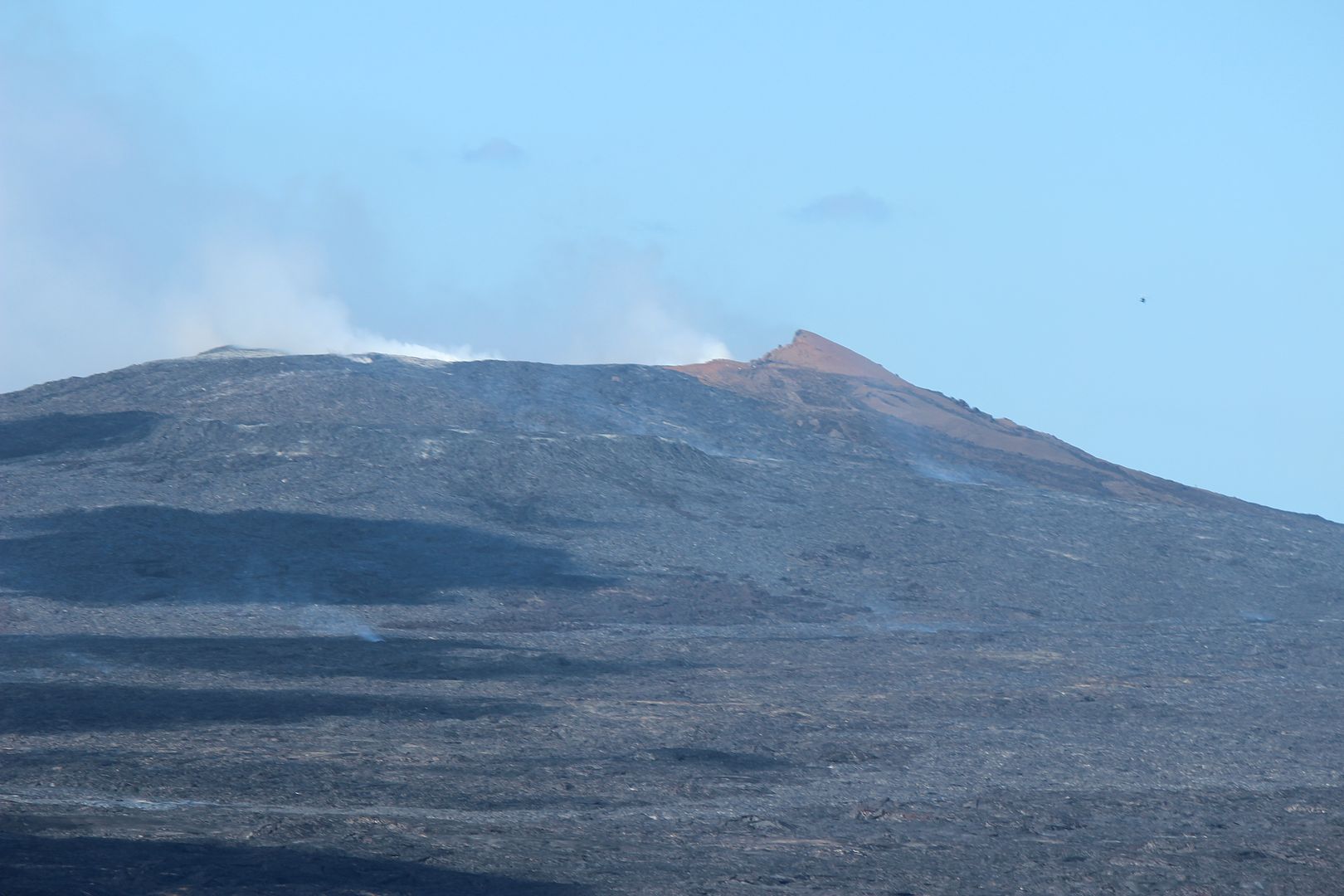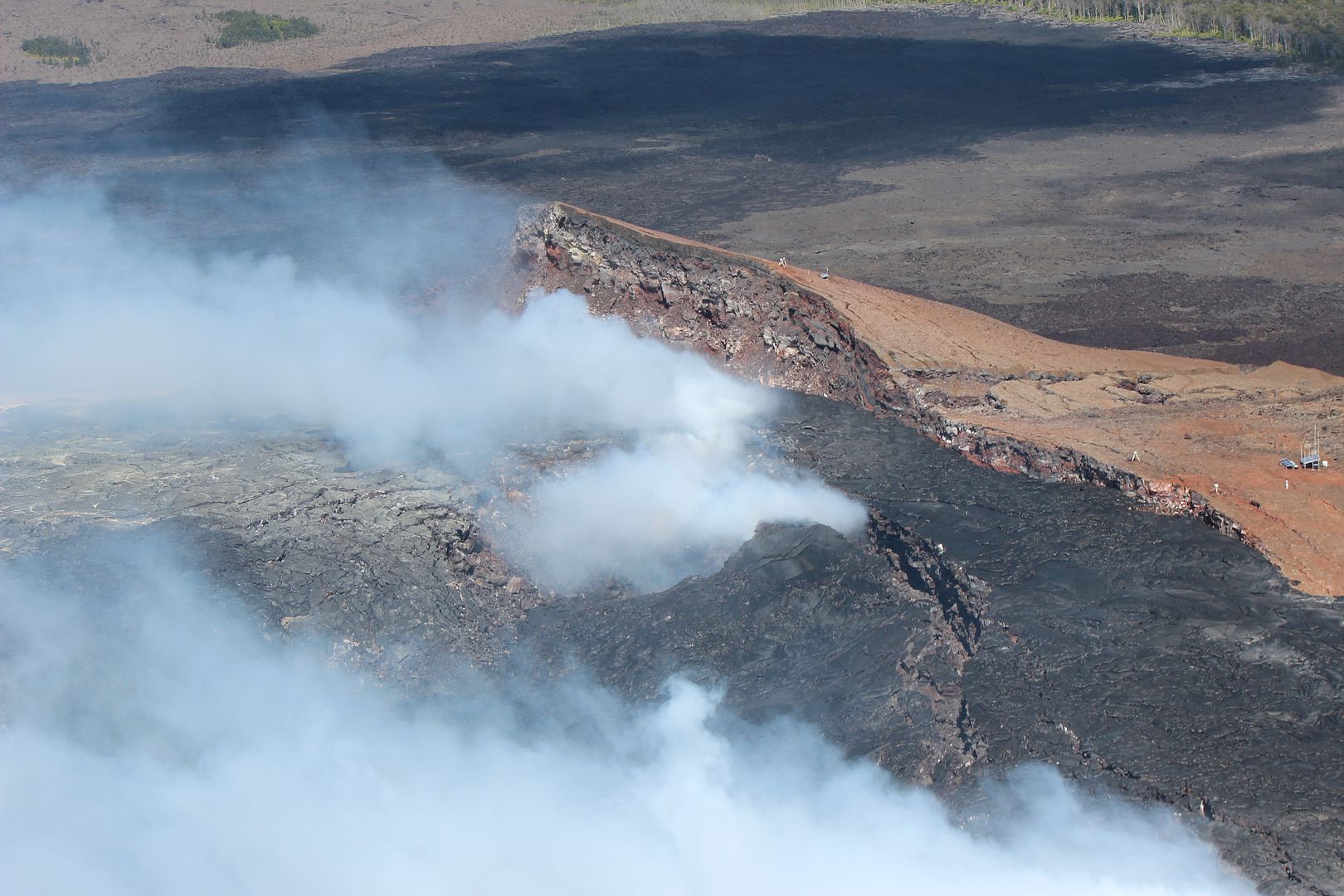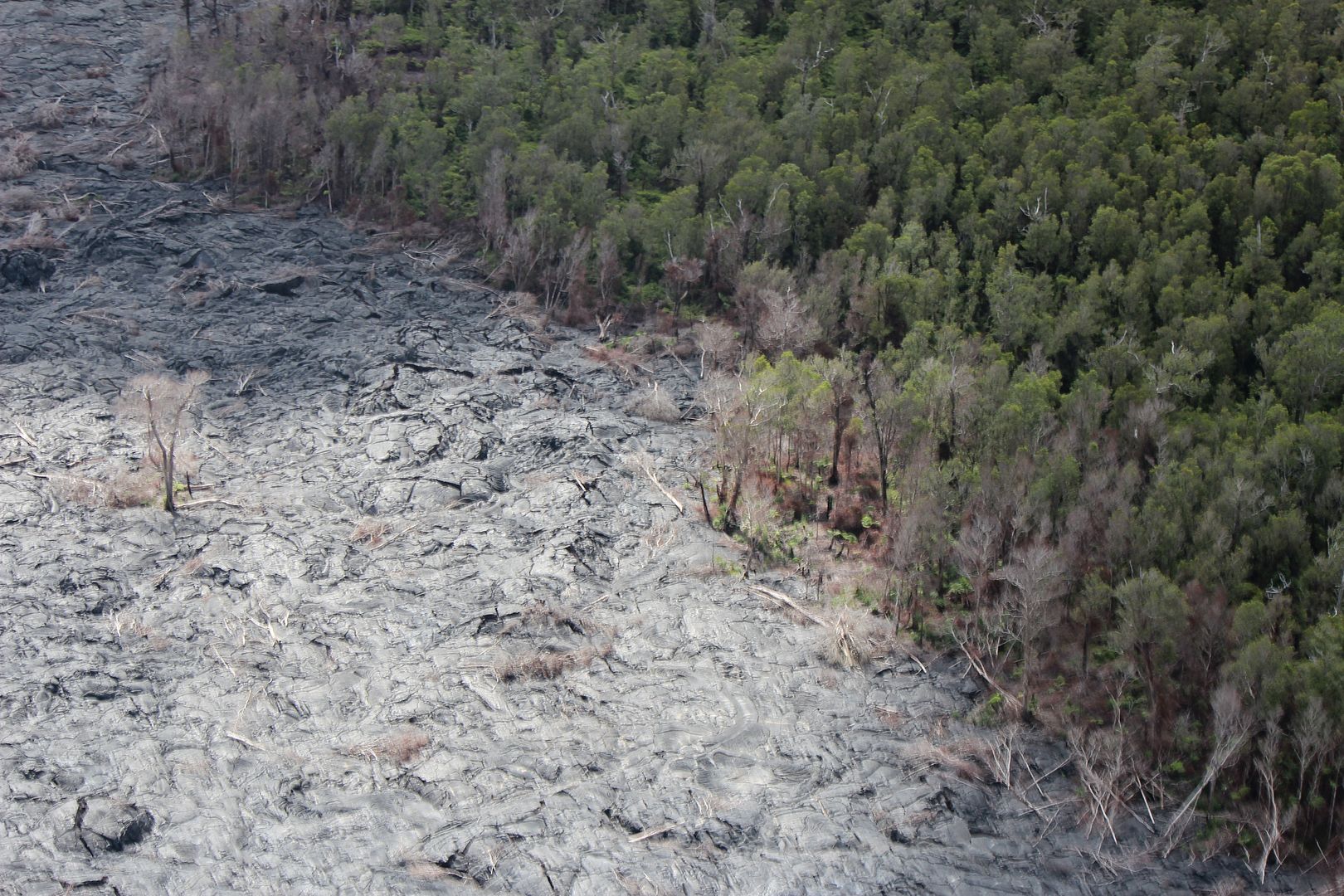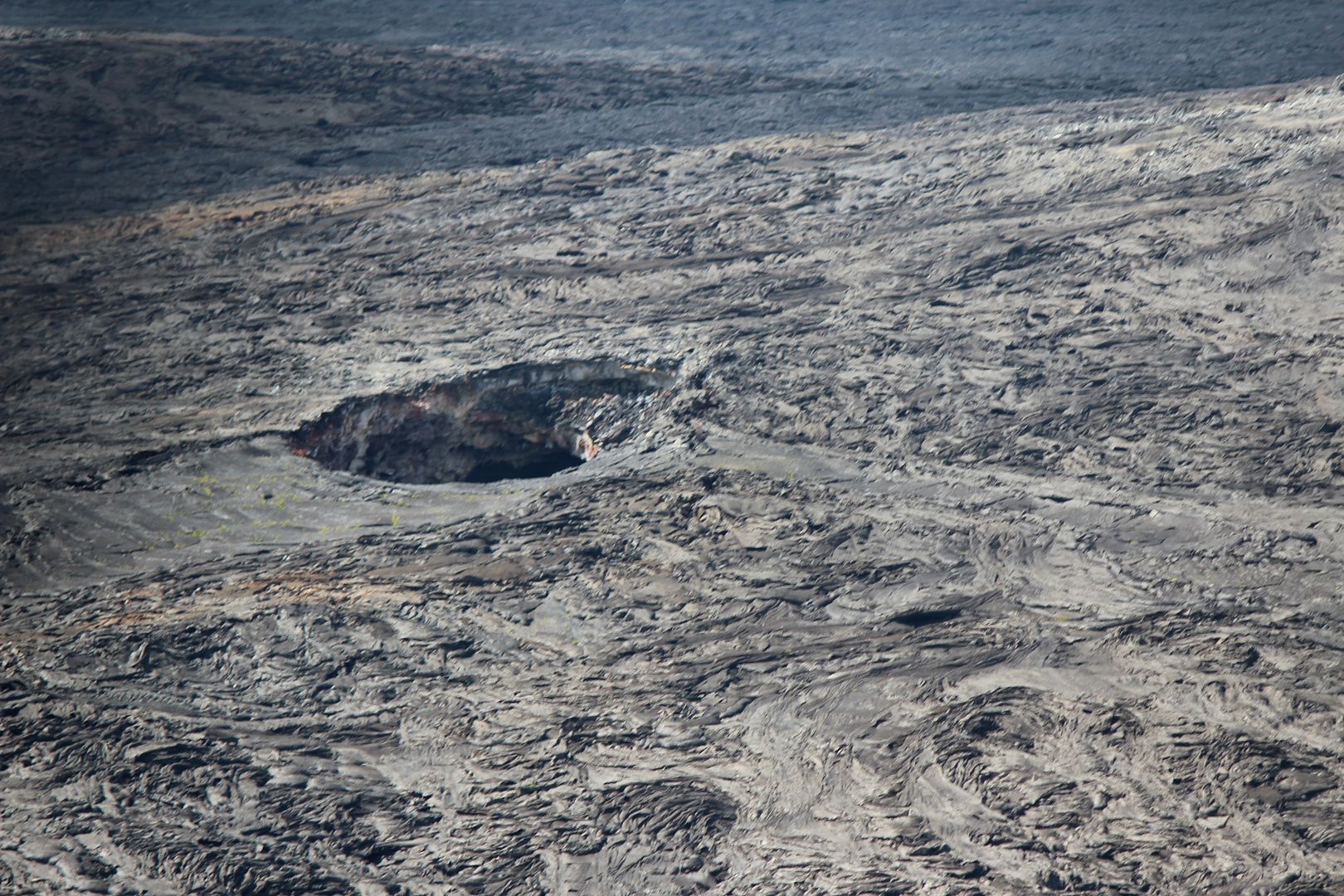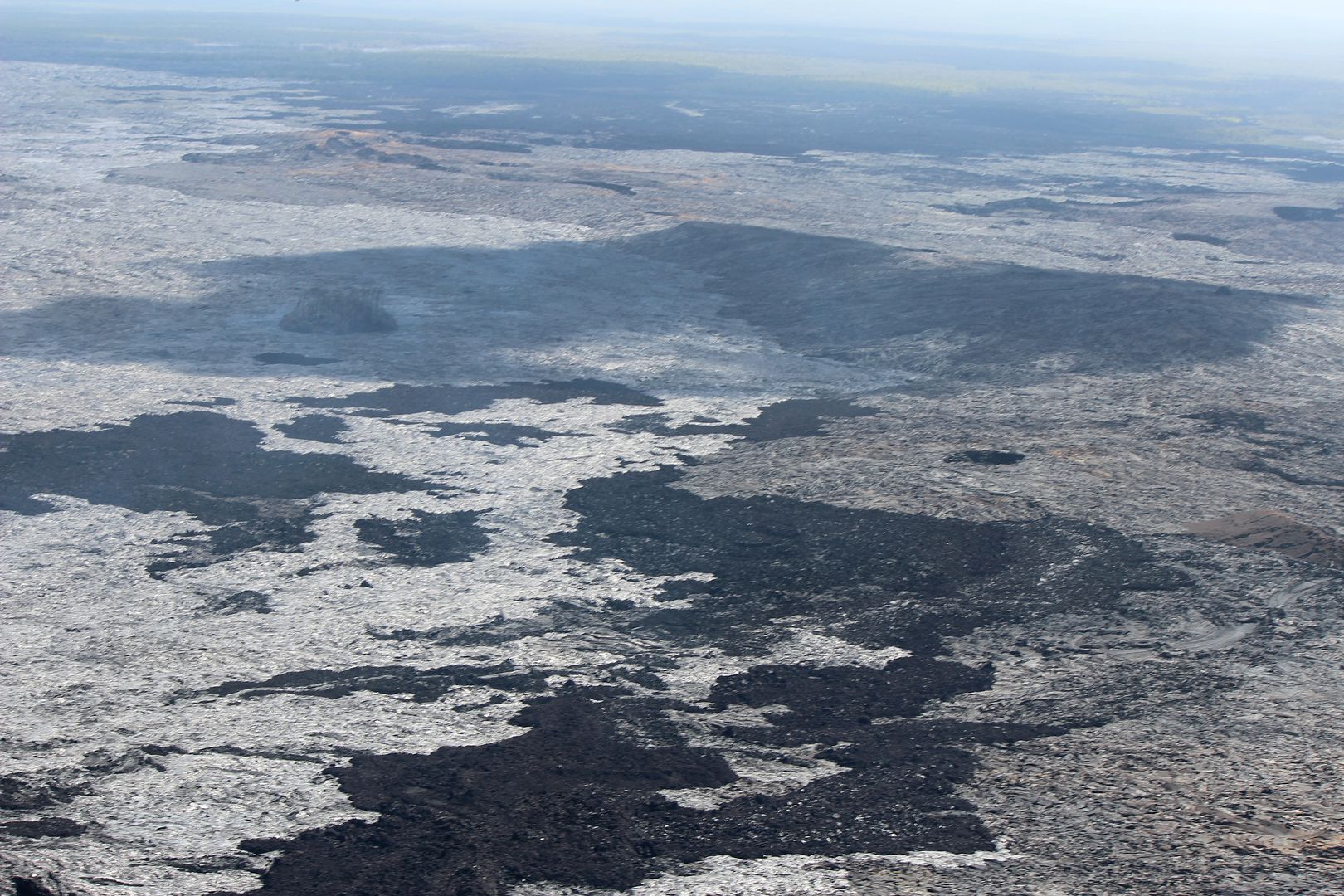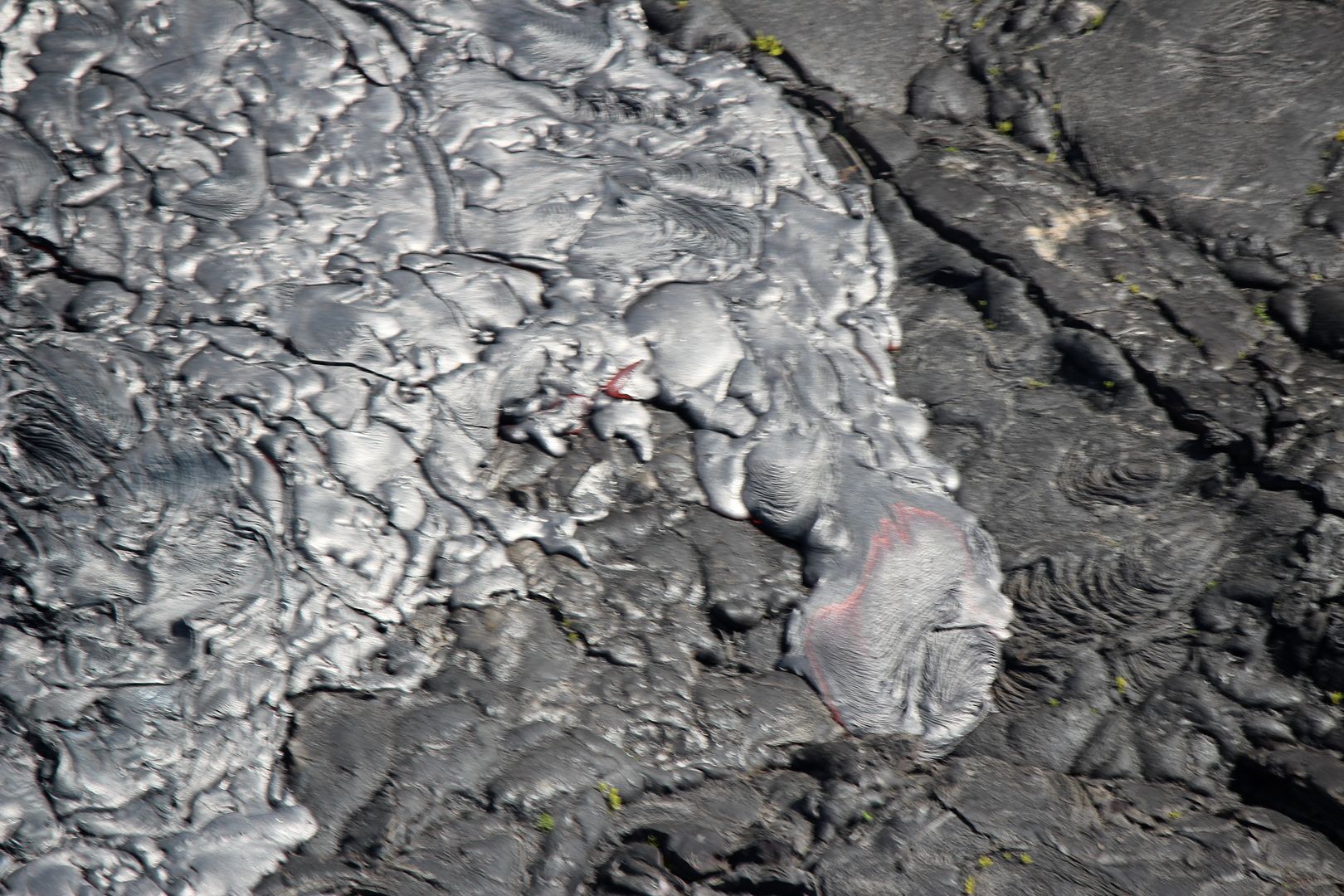Thursday, August 28, 2014
Wednesday, August 27, 2014
August Moon
The Moon has returned to the evening skies. Here's how it looked tonight.
I am finally starting to post pics to Instagram, so if you are into that, come on over and have a look.
I am finally starting to post pics to Instagram, so if you are into that, come on over and have a look.
Monday, August 25, 2014
Sunday, August 24, 2014
A Visit to Meteor Crater
Last Sunday I visited Meteor Crater for the first time in just over a decade. The crater (once called Coon Mountain Butte), also known as Barringer Crater, is the first confirmed asteroid impact crater on Earth.
For a long time many thought that the site was a volcanic feature. Likely the presence of the San Francisco volcanic field (on the horizon in the photo below), northwest of the crater, clouded the judgement of the early geologists, but the clues as to its origin are everywhere.
There's no volcanic rock within or immediately around the crater. The prevailing rock formation on the surface in the surrounding countryside is the reddish brown siltstone of the Moenkopi formation. You can see it in the photo above, especially framed by the road in the upper right. All of the whitish rocks in the foreground in this photo are part of the crater's ejecta--deeper rocks that were thrown out on top of the red rocks during the formation of the crater.
Within the crater's inner walls are steeply tilted sedimentary layers (above) of whitish limestone and sandstone that were once horizontal. The impact explosion that created the crater shattered and tilted these layers upward.
The countryside surrounding the crater was once littered with Iron-Nickel meteorites (they've mostly been collected now), remnants of the asteroid that formed the crater. The single largest piece recovered is known as the Holsinger Meteorite (above). It weighs 1,406 pounds.
There's a nice museum that's well worth looking at. I was especially happy to see so much devoted to Eugene Shoemaker, the man who proved that the crater was created by an asteroid impact. If you haven't read it, I highly recommend David Levy's biography of him, Shoemaker by Levy and if you want to read about the crater I suggest tracking down the classic book by H.H. Nininger Arizona's Meteorite Crater.
Here is one of the panoramas I shot of the crater:
For a long time many thought that the site was a volcanic feature. Likely the presence of the San Francisco volcanic field (on the horizon in the photo below), northwest of the crater, clouded the judgement of the early geologists, but the clues as to its origin are everywhere.
There's no volcanic rock within or immediately around the crater. The prevailing rock formation on the surface in the surrounding countryside is the reddish brown siltstone of the Moenkopi formation. You can see it in the photo above, especially framed by the road in the upper right. All of the whitish rocks in the foreground in this photo are part of the crater's ejecta--deeper rocks that were thrown out on top of the red rocks during the formation of the crater.
Within the crater's inner walls are steeply tilted sedimentary layers (above) of whitish limestone and sandstone that were once horizontal. The impact explosion that created the crater shattered and tilted these layers upward.
The countryside surrounding the crater was once littered with Iron-Nickel meteorites (they've mostly been collected now), remnants of the asteroid that formed the crater. The single largest piece recovered is known as the Holsinger Meteorite (above). It weighs 1,406 pounds.
There's a nice museum that's well worth looking at. I was especially happy to see so much devoted to Eugene Shoemaker, the man who proved that the crater was created by an asteroid impact. If you haven't read it, I highly recommend David Levy's biography of him, Shoemaker by Levy and if you want to read about the crater I suggest tracking down the classic book by H.H. Nininger Arizona's Meteorite Crater.
Here is one of the panoramas I shot of the crater:
Saturday, August 23, 2014
Are Your Clouds at Night Bright or Dark?
My day job is working for the International Dark-Sky Association, where it is our mission to fight light pollution. I didn't need it, but I had a pretty vivid reminder of what we are fighting for on my recent vacation in Hawai'i.
My wife and I rented a place in the Puna District of the Big Island, right on the ocean, where there is very little artificial light. The first night there I hadn't yet adjusted to the time change and woke up hours before sunrise. When I realized that I wasn't going to be able to get back to sleep, I grabbed my binoculars and stepped in the dark to the beach-facing balcony. There the glittering majesty of the night sky was an awesome thing to behold. Ocean waves crashed below but my attention was on the sky. The stars of late fall and early winter filled the sky, all the way down to the horizon.
It has been quite some time since I experienced skies so
dark. When Venus finally poked up above the distant clouds its light
quite noticeably brightened the deck.
In the evening skies the summer Milky Way (above) was brilliant with its bright 'clouds' of stars and dark lanes of dust instantly visible - no dark adaptation was needed.
Occasionally clouds drifted past and I was reminded of a paper published two years ago, Red is the new black, how the color of urban sky glow varies with cloud cover (pdf). The paper points how how in cities with sky glow clouds actually magnify the problem, but in times before the advent of artificial light skies actually got darker when it was cloudy. There are a lot of implications from this (read the paper), but let me illustrate the phenomenon.
Compare the view (above) that I took last month in Hawai'i with dark clouds silhouetted against the star-filled sky, with this shot (below) that I took last night from my home near Tucson, Arizona.
The difference is shocking. The two photos were taken on moonless nights, just about 1 month apart with the same camera and settings looking at the same part of the sky.
Even though there are relatively strict outdoor lighting ordinances in Tucson/Pima County, the skies here are awash with light pollution and sky glow. Sadly, many communities have little or no controls of outdoor lighting and there skies there are even worse. The clouds in the photo above are white, almost as if illuminated by moonlight. The likely culprit illuminating the clouds with white light is a sports complex to my south. Clouds in other directions had a more orange hue, as in the photo below:
The photos show that there is much work to be done in controlling light pollution, even in communities where the effort is underway. Learn more about the problem and what you can do about it at darksky.org.
My wife and I rented a place in the Puna District of the Big Island, right on the ocean, where there is very little artificial light. The first night there I hadn't yet adjusted to the time change and woke up hours before sunrise. When I realized that I wasn't going to be able to get back to sleep, I grabbed my binoculars and stepped in the dark to the beach-facing balcony. There the glittering majesty of the night sky was an awesome thing to behold. Ocean waves crashed below but my attention was on the sky. The stars of late fall and early winter filled the sky, all the way down to the horizon.
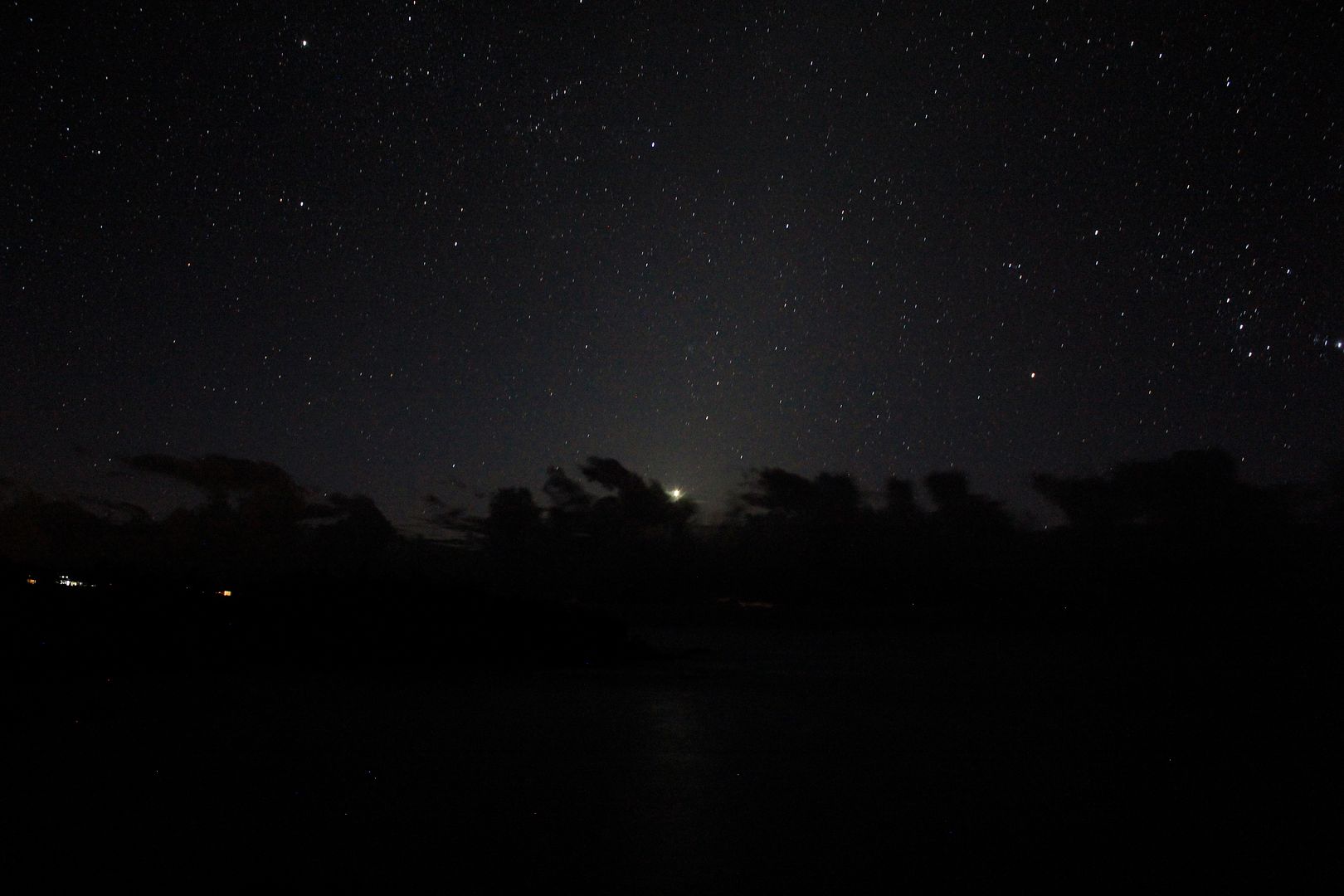 |
| Venus rises, with Orion at right |
In the evening skies the summer Milky Way (above) was brilliant with its bright 'clouds' of stars and dark lanes of dust instantly visible - no dark adaptation was needed.
Occasionally clouds drifted past and I was reminded of a paper published two years ago, Red is the new black, how the color of urban sky glow varies with cloud cover (pdf). The paper points how how in cities with sky glow clouds actually magnify the problem, but in times before the advent of artificial light skies actually got darker when it was cloudy. There are a lot of implications from this (read the paper), but let me illustrate the phenomenon.
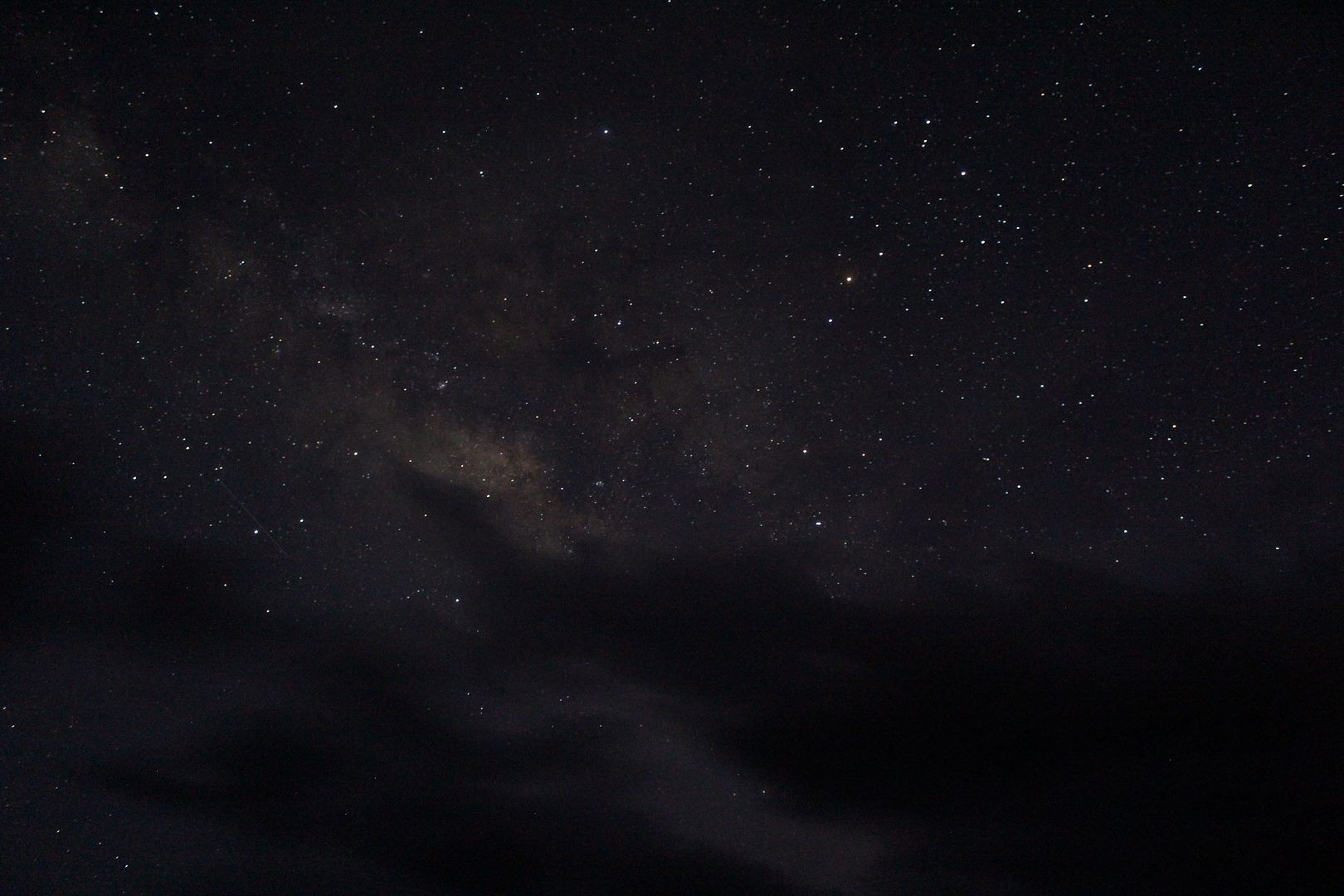 |
| Sagittarius and Scorpius with dark clouds in silhouette |
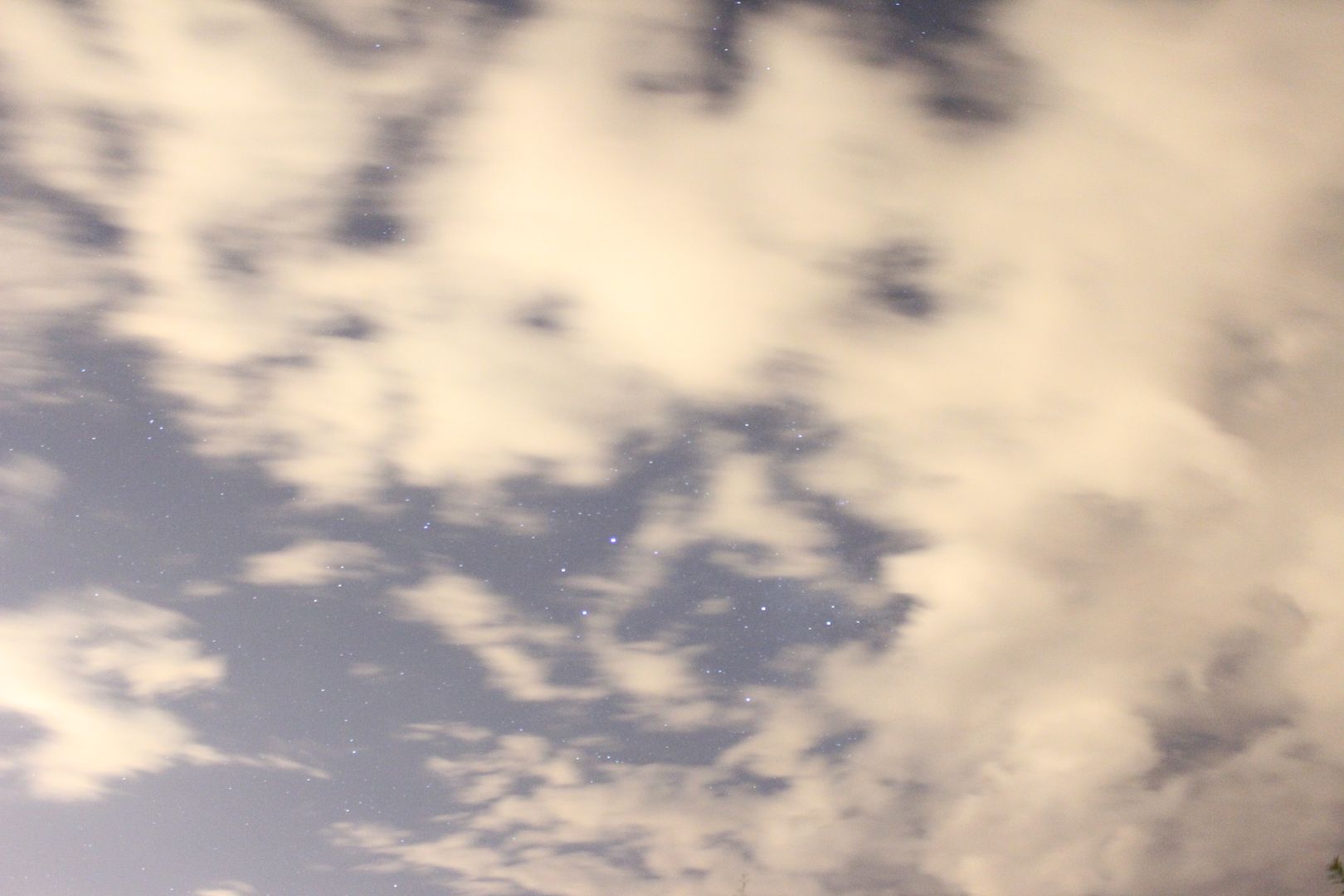 |
| Sagittarius in cloudy, light polluted skies |
Even though there are relatively strict outdoor lighting ordinances in Tucson/Pima County, the skies here are awash with light pollution and sky glow. Sadly, many communities have little or no controls of outdoor lighting and there skies there are even worse. The clouds in the photo above are white, almost as if illuminated by moonlight. The likely culprit illuminating the clouds with white light is a sports complex to my south. Clouds in other directions had a more orange hue, as in the photo below:
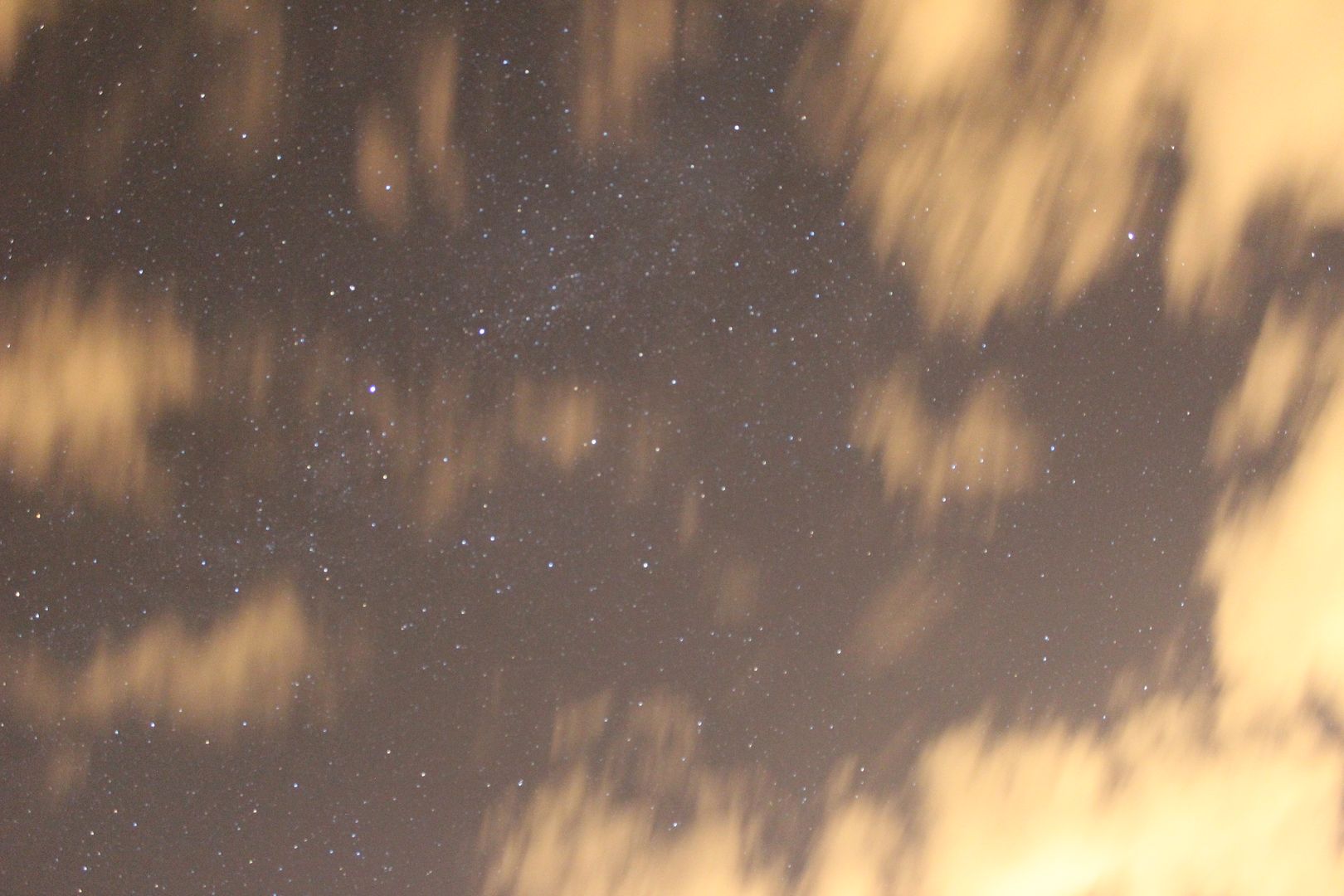 |
| Cygnus in light polluted, party cloudy skies |
Star Trek: The Changeling
It's time for another episode of Star Trek:
The story begins with the crew of the Enterprise discovering that all life in the Malurian system has been killed and, before the opening credits roll, they come under attack.
Spock reports that the weapon that hit them was as powerful as "ninety of our photon torpedoes" and that their shields will hold for another three hits -- a fourth will knock out their shields. That's just plain ridiculous. Even more ridiculous, Kirk orders that they fire a photon torpedo at the attacker and is astonished to hear that it has absorbed the torpedo's energy. Wait, didn't their own shields just do the same thing, but for a weapon 90 times stronger?
They get hit several more times and with his back up against the wall, knowing that his weapons are useless and another hit from the alien will destroy the Enterprise, Kirk finally tries what he should have done right away -- talking to the attacker, a small intelligent alien machine known as Nomad.
Conversation disarms the situation and they beam Nomad aboard, where it promptly asks about their point of origin. Figuring that Nomad would not have any reference points, they agree to show it a diagram of our solar system.
Nomad figures out that they are from Earth and refers to Kirk as "the creator." We also learn that Nomad's "function is to probe for biological infestations, to destroy that which is not perfect," which explains what happened in the Malurian system.
Kirk and the gang need to figure things out, without Nomad hanging around, so they leave him with an engineering tech (Lieutenant Singh) and have a pow wow. Spock uses the library computer to Google Nomad and we learn a few things. There was a probe called Nomad. It was created by Jackson Roykirk (above), launched from Earth but it was lost, "presumed destroyed by a meteor collision" and that the Nomad with them now really doesn't look all that much like the original probe (below).
As they have their meeting Nomad hears Uhura singing over the intercom and goes to the bridge to learn what that's all about.
Nomad scans and essentially erases Uhura's mind. Oh, and he kills Scotty too. Meanwhile, Kirk, Spock and McCoy seem pretty bored talking about Nomad in the Briefing Room.
They are called to the Bridge where Nomad having killed him now, thankfully, offers to repair the "unit Scott." Nomad can't repair Uhura, but still manages to put in a slam against women (something that happens a lot in TOS), calling them "a mass of conflicting impulses."
Nomad then tries to improve the efficiency of the Enterprise, pushing their speed past warp 10 (yet, strangely, no one devolves into salamanders) before Kirk calls it off. As he does so, Kirk confesses that he, himself, is a biological unit. Not a good move. Nomad says, "There is much to be considered before I return to launch point. I must re-evaluate." Yeah, Nomad wants to head home where it will find Earth infested with imperfect biological units. That's a problem. Stalling for time, Kirk again tells Nomad to wait with two Red Shirts.
It’s often said that the definition of insanity is doing the same thing over and over and expecting different results. I'm looking at you James T. Kirk.
Still, Kirk manages to save the day by pointing out that Nomad has made errors, is imperfect and must carry out its prime function. They beam it into space where it explodes and the day is saved (except for the four Red Shirts).
All-in-all, The Changeling is a fun episode as long as one doesn't look too closely. Yes, it is another in the series of Kirk vs. Computer episodes, but the many of the basic plot points were evidently good enough to be lifted for Star Trek: The Motion Picture (but that's another story).
There was no new music written for this episode. So, instead, you should totally check out this song by the band Five Year Mission:
Next up, The Apple.
The story begins with the crew of the Enterprise discovering that all life in the Malurian system has been killed and, before the opening credits roll, they come under attack.
Spock reports that the weapon that hit them was as powerful as "ninety of our photon torpedoes" and that their shields will hold for another three hits -- a fourth will knock out their shields. That's just plain ridiculous. Even more ridiculous, Kirk orders that they fire a photon torpedo at the attacker and is astonished to hear that it has absorbed the torpedo's energy. Wait, didn't their own shields just do the same thing, but for a weapon 90 times stronger?
They get hit several more times and with his back up against the wall, knowing that his weapons are useless and another hit from the alien will destroy the Enterprise, Kirk finally tries what he should have done right away -- talking to the attacker, a small intelligent alien machine known as Nomad.
Conversation disarms the situation and they beam Nomad aboard, where it promptly asks about their point of origin. Figuring that Nomad would not have any reference points, they agree to show it a diagram of our solar system.
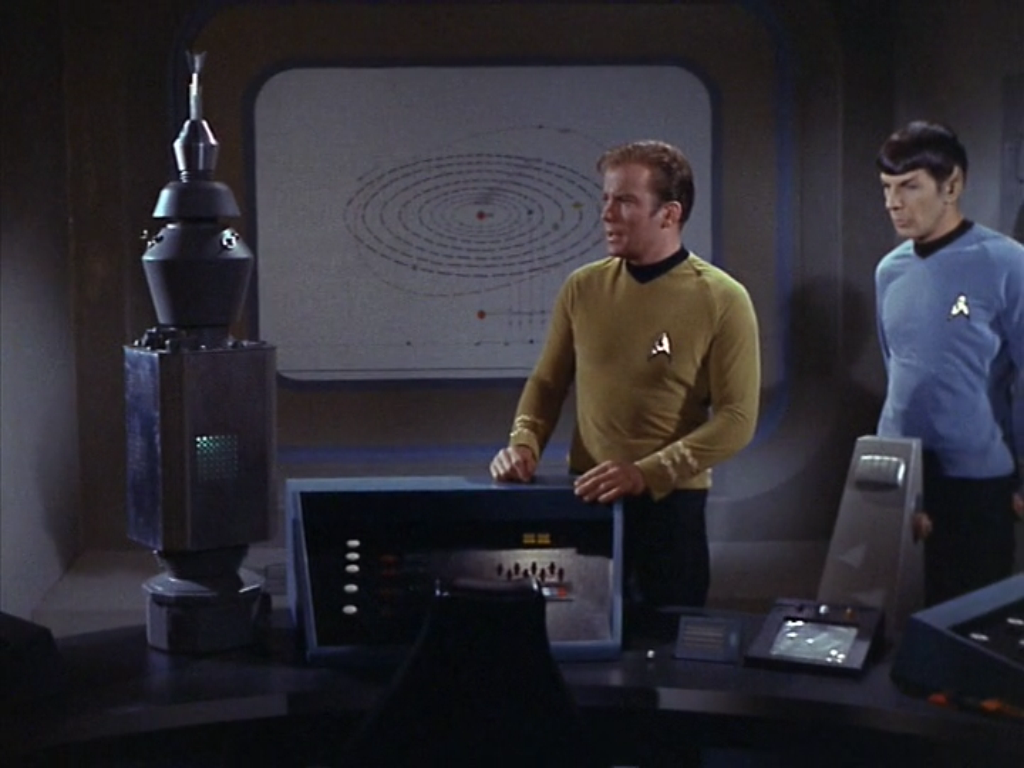 |
| Kirk explains to Nomad that in the 23rd Century Pluto is still a planet. |
Kirk and the gang need to figure things out, without Nomad hanging around, so they leave him with an engineering tech (Lieutenant Singh) and have a pow wow. Spock uses the library computer to Google Nomad and we learn a few things. There was a probe called Nomad. It was created by Jackson Roykirk (above), launched from Earth but it was lost, "presumed destroyed by a meteor collision" and that the Nomad with them now really doesn't look all that much like the original probe (below).
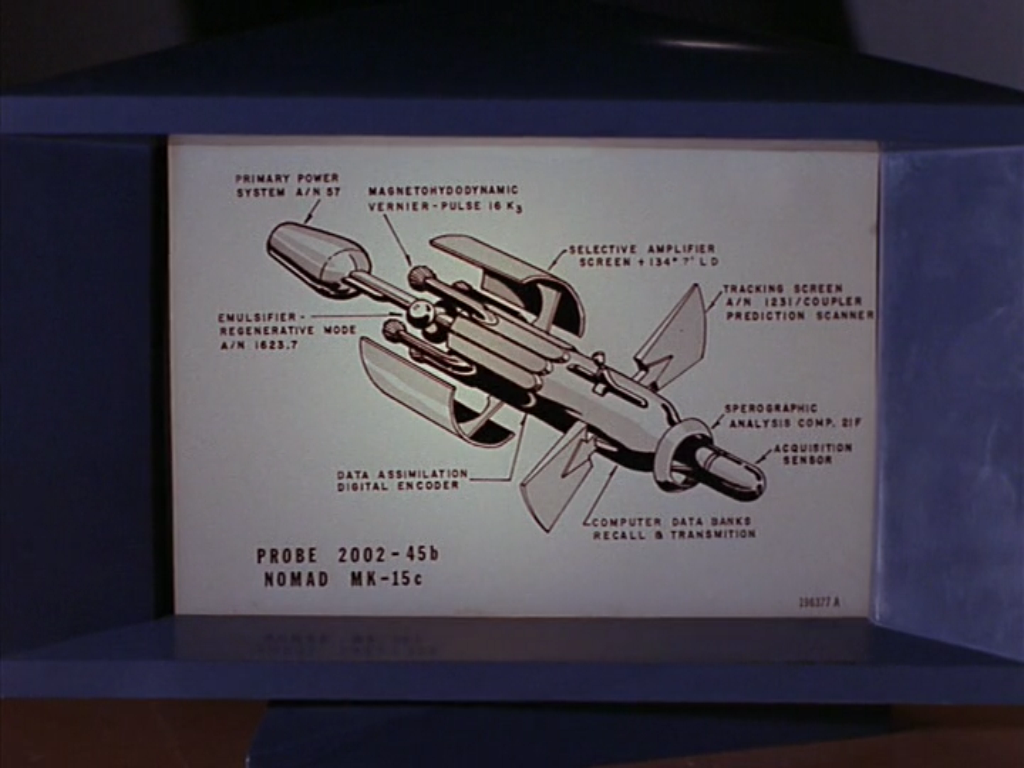 |
| What the heck is a "Coupler Prediction Scanner"? |
Nomad scans and essentially erases Uhura's mind. Oh, and he kills Scotty too. Meanwhile, Kirk, Spock and McCoy seem pretty bored talking about Nomad in the Briefing Room.
They are called to the Bridge where Nomad having killed him now, thankfully, offers to repair the "unit Scott." Nomad can't repair Uhura, but still manages to put in a slam against women (something that happens a lot in TOS), calling them "a mass of conflicting impulses."
Uhrua gets re-educated by Nurse Chapel ("She'll be back on the job within a week.") and Spock mind melds with Nomad. He learns Nomad's back story and its current mission--sterilize imperfections--which proves to be so interesting that Kirk and Spock need to talk about it while Nomad stays under the watchful care of two Red Shirts. What could go wrong?
Oh, yeah. That.Nomad then tries to improve the efficiency of the Enterprise, pushing their speed past warp 10 (yet, strangely, no one devolves into salamanders) before Kirk calls it off. As he does so, Kirk confesses that he, himself, is a biological unit. Not a good move. Nomad says, "There is much to be considered before I return to launch point. I must re-evaluate." Yeah, Nomad wants to head home where it will find Earth infested with imperfect biological units. That's a problem. Stalling for time, Kirk again tells Nomad to wait with two Red Shirts.
It’s often said that the definition of insanity is doing the same thing over and over and expecting different results. I'm looking at you James T. Kirk.
Still, Kirk manages to save the day by pointing out that Nomad has made errors, is imperfect and must carry out its prime function. They beam it into space where it explodes and the day is saved (except for the four Red Shirts).
All-in-all, The Changeling is a fun episode as long as one doesn't look too closely. Yes, it is another in the series of Kirk vs. Computer episodes, but the many of the basic plot points were evidently good enough to be lifted for Star Trek: The Motion Picture (but that's another story).
There was no new music written for this episode. So, instead, you should totally check out this song by the band Five Year Mission:
Next up, The Apple.
Saturday, August 16, 2014
Wednesday, August 13, 2014
Monsoon Sunsets
There is so much to love about Arizona's monsoon sunsets. We've had some good ones lately and quite often the view is just as great in the east as it is in the west.
Last Saturday night was a great example.
In the west was this cumulonimbus cloud that looks to me like a cartoon face seen in profile.
While that view was nice, the view to the east was even better with a nearly full moon rising above the remnants of storm clouds.
Tonight was another great example of a sunset that was wonderful everywhere you looked.
To our northeast was this cumulonimbus that was catching the glow of sunset while dumping welcomed rains on the Santa Catalina Mountains.
Looking to the west a few minutes later and we were given a nice show of crepuscular rays that extended all the way to the east (making them anticrepuscular rays).
A wonderful sight!
Last Saturday night was a great example.
In the west was this cumulonimbus cloud that looks to me like a cartoon face seen in profile.
While that view was nice, the view to the east was even better with a nearly full moon rising above the remnants of storm clouds.
Tonight was another great example of a sunset that was wonderful everywhere you looked.
To our northeast was this cumulonimbus that was catching the glow of sunset while dumping welcomed rains on the Santa Catalina Mountains.
Looking to the west a few minutes later and we were given a nice show of crepuscular rays that extended all the way to the east (making them anticrepuscular rays).
A wonderful sight!
Tuesday, August 12, 2014
Things From Another World or Day of the Tentacle
Yeah, I couldn't decide which title I liked best. Anyway, here are some wild looking plants I photographed from the Hawaii Tropical Botanical Garden.
Nature is freaky, isn't it?
Nature is freaky, isn't it?
Sunday, August 10, 2014
Volcano! (Part 2)
While in Hawai'i we were especially interested in viewing the current volcanic activity. I reported on some of this in my post yesterday. We also took a no doors helicopter ride to see over to see Puʻu ʻŌʻo, the volcanic area that is erupting on Kīlauea's East Rift.
Above: our view as we were approaching Puʻu ʻŌʻo.
Here are two close shots looking into the volcanic cone, which at the time of our visit had two lava ponds within. The lava ponds were hidden, but marked, by twin plumes of volcanic gasses.
The USGS Hawaiian Volcano Observatory maintains a suite of solar powered instruments and transmitters that monitor the volcanic activity. You can seen them on the right in the shot above and in greater detail below.
There was also an active lava flow, that at the time of our flyover, was moving to the northeast (red & pink areas in the map below).
Here are a pair of wide angle USGS HVO photos taken the same day as our helicopter flight. The first is looking toward the cone.
The shot below is with the cone behind the photographer:
Even though the volcano wasn't putting on some of the spectacular displays that it has in the past, the helicopter flight was still an amazing experience. The flight was very smooth and, yes, you could feel the heat of the lava below.
The volcanic landscape surrounding the cone is stark, with dramatic cuts through the rainforests on the southeast side of the Big Island.
Signs of its previous eruptive activity were everywhere.
We eventually headed right over the actively flowing lava. Just about all of it had a thin, somewhat shiny crust of hardening lava that insulates the molten rock within.
We did see some of the lava glow poking through. You can see it in this shot:
Pele's fires of creation are one of Nature's most impressive sights. I am confident that my wife & I will return when the volcano is more active, specifically to see her in action.
Above: our view as we were approaching Puʻu ʻŌʻo.
Here are two close shots looking into the volcanic cone, which at the time of our visit had two lava ponds within. The lava ponds were hidden, but marked, by twin plumes of volcanic gasses.
The USGS Hawaiian Volcano Observatory maintains a suite of solar powered instruments and transmitters that monitor the volcanic activity. You can seen them on the right in the shot above and in greater detail below.
 |
| Your tax dollars at work studying an active volcano. |
 |
| A map of Puʻu ʻŌʻō and its lava flows from the USGS Hawaiian Volcano Observatory |
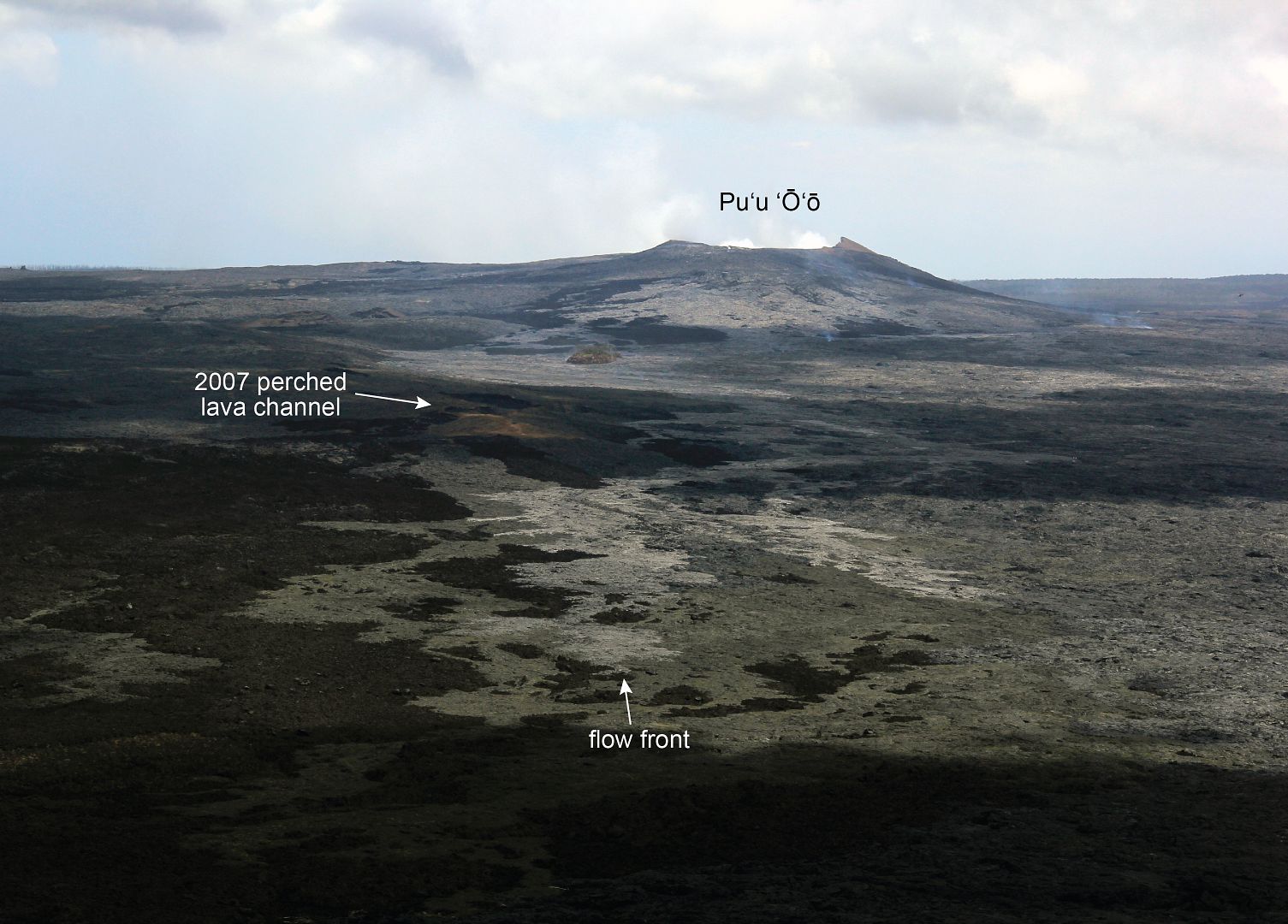 |
| USGS Hawaiian Volcano Observatory photo |
 |
| USGS Hawaiian Volcano Observatory photo |
The volcanic landscape surrounding the cone is stark, with dramatic cuts through the rainforests on the southeast side of the Big Island.
We eventually headed right over the actively flowing lava. Just about all of it had a thin, somewhat shiny crust of hardening lava that insulates the molten rock within.
We did see some of the lava glow poking through. You can see it in this shot:
Pele's fires of creation are one of Nature's most impressive sights. I am confident that my wife & I will return when the volcano is more active, specifically to see her in action.
Subscribe to:
Posts (Atom)
